You already know about the British Army’s problems.
Polemics that point fingers and state the obvious are easy to write and even easier to find.
Proposals that advocate for increasing budgets are equally common.
I am going to try to avoid both.
Introduction
I saw a comment online a while ago that went something like this…
They think we have a Corps, they act like we have a Division, and ignore that we struggle to generate a Brigade
This apparent disconnect is the root of many of the British Army’s problems, an unwillingness, or inability, to reconcile the outward face of the organisation with the actual state it is in.
It is worsened by what seems like an unquenchable thirst for novelty, window shopping and change.
That said, I suspect no one is more acutely aware of the problems that the British Army has than the British Army itself, but publicly recognising them is both a cultural and political challenge, neither trivial.
Future Soldier is the latest iteration of an Army change strategy, this article will describe an alternative.
Cash is King
We need to deal with this one up front.
The British Army may well need more money, but it definitely needs better spending.
The nation is up to its eyeballs in tax and debt.
Army leaders must recognise they are unlikely to see a bigger budget settlement than they want, the other services have equal (or more) claim to the defence budget, and other government departments likewise.
The three big budget hitters are personnel, equipment, and equipment support.
There is no getting away from the simple fact that if the Army wants to transform in any way, it has to think in terms of the balance between those three major spending areas.
In addition to the spending categories is time, a factor that can be manipulated to account for the available budget.
In-year change potential will also be limited by commitments made in previous years, support contracts may last for many years, and equipment programmes likewise.
To summarise, the British Army leadership may have limited ability to make dramatic changes because of a combination of the mechanisms of public sector finance, already committed spending and the simple fact there are only so many commodity categories to adjust.
The Role of the British Army
The curse of the modern British Army is to endlessly ponder on the purpose of the modern British Army.
Someone usually interjects with a remark about being ‘a projectile fired by the Royal Navy’ countered with ‘conflict is resolved on land’.
Arguments about being continental or expeditionary then follow.
Tedious.
Simply put, the role of the British Army is to prepare for war, and if necessary, get involved in it.
A more nuanced view is the British Army must provide the government of the day a range of options, its utility is its flexibility.
The more it specialises, the less flexibility it will have, and the less utility it will provide.
The less utility it provides, the smaller the budget it will justify.
Simple.
High-Level Change Principles and Objectives
There are several change principles that inform this proposal.
NATO is vitally important, and so are other things
The UK must make a credible land contribution to European security, we are a European nation.
Quick off the mark to help Ukraine, forward deployed forces in eastern and Northern Europe, contributing to training and air policing missions, and extremely supportive of Finland and Sweden joining NATO.
This makes us a credible European security partner.
As the USA inevitably focuses on the Pacific, additional credibility will be needed, but not just from us.
Future Soldier Refine (if that is a thing), will certainly place Russia and NATO at the top of the priority list, wider geopolitics and domestic politics should dictate some degree of focus on the collective defence of Europe.
I do not believe the British Army should abandon its ‘rest of the world’ activities, although one could certainly make a case for tacking more closely to the greatest threat in proximity, even if that threat has been battered from pillar to post by Ukraine.
Sudan has also amply demonstrated that the land contribution to UK security cannot be one-dimensional, it should have some focus on Europe, but it should not ignore the Middle East, Africa, the Indo-Pacific, Caribbean, and South Atlantic regions either.
Given the increasing land power of Eastern European and Nordic states, and with the centre of European power gravity shifting eastward, the UK should consider how it can provide a complementary rather than duplicative capability that also provides utility outside of Europe.
Organise for Long-Term Stability
Not so many years ago, there was an absolute certainty that the future was enduring operations in the global war on terror.
Then there wasn’t.
If the British Army over-optimises to a peer enemy threat now, it may well find it is ill-suited to a near future emergent threat.
Making the British Army resistant to the often fickle winds of military fashion will not be easy.
Agile organisations should have no problem with changing threats, but the British Army is not an agile organisation, and neither can it be.
It is a supertanker; basing, equipment programmes, force design, personnel planning, each one of those (and more) takes a great deal of time to change.
Can it aspire to improve agility, yes of course, but wishing agility into existence is not a viable strategy either.
The last couple of decades show a procession of change programmes that simply never finish, it must be exhausting.
Future Army Structure, Future Army Structure (Next Step), Future Force 2020 (with Multi-Role Brigades), Army 2020, and now, Future Soldier.
Organisational stability is positive, it creates an enduring and predictable demand signal for industry, allows service families and basing infrastructure to settle, provides clarity for allies, and reduces the change fatigue that is so financially corrosive.
Re-Evaluate Non-Core Task Delivery
Not all the Army’s tasks are the gift of the Army to change.
It should still encourage a re-evaluation of its role in ceremonial and public duties, conflict reduction and upstream engagement, civil resilience, capacity building, cadet forces and music.
Greater use of individual contractors, Full-Time Reserves, third-party suppliers and Civil Servants would allow regular headcount to be redirected to those areas that are understrength.
The aim is to generate more combat power by concentrating intellectual energy and physical resources on a smaller number of outcomes.
‘People are our strength’ has to be more than a slogan
Civilians and uniformed personnel in defence, and their families, are the backbone of capability.
All the equipment in the world is useless unless we have committed and engaged personnel that are not taken advantage of or abused, see a career and vocation, not a job, and have partners that allow them to serve the nation without being disadvantaged because of it.
Realistic training, a sense of being valued, good remuneration, partner employment options, a lack of petty regulation, not being persecuted by the legal profession, being treated like adults, not being subject to short-term trawls for role filling, decent accommodation and food, and basic IT and administrative systems that work all contribute to the objective of making people are keen to join, and perhaps more importantly, stay.
There are many proposals by service families federations, charities and independent commenters on how we can improve service and service family life, and life after leaving
There is no shortage of good ideas, this is a balance of investment issue.
Whilst much great work has happened and continues to do so, simply put, we should spend a greater proportion of the Army budget on people, even if it reduces the budget available for other things.
Foursquare Behind the Land Industrial Strategy
Becoming financially credible according to the public and wider government must be one of the British Army’s top priorities.
Every year we are treated to the spectacle of the British Army being given a regular kicking from the Public Accounts and Defence Committees, the National Audit Office, the Infrastructure and Projects Authority, and sundry others.
Despite this, the MoD gets almost no credit for the excellent work it has done with the recently introduced Land Industrial Strategy, rebuilding industrial resilience and capacity, especially with the Boxer enterprise.
If COVID-19 has taught us anything, though, it has taught us the value of onshore design and manufacturing capacity.
If Ukraine has taught us anything, it has taught us the value of onshore design and manufacturing capacity.
I make no apology for being a maximalist when it comes to sovereign design, manufacturing, and support for the materials of war.
But as my friend Mr Bad Santa says, shit in one hand and wish in the other, see which fills up first.
We, therefore, have to be sensible and recognise practical limits.
A politically astute Army leadership would realise that a future Labour Party government is going to create a door marked British Jobs, if they do not see it is there to be walked through, they are beyond help.
The British Army just has to get better at this, and it has to be seen to get better.
Business and Technical Skills Reduce Risk
Any book or study on the subject of defence acquisition will state that developing and maintaining in-house skills is an excellent way of achieving realism in requirement setting, and therefore decreasing risk in procurement.
During the requirements and concept stages, those working on them should have a much more profound understanding of achievability and avoid asking for things that are not relevant because industry has moved on, no point in demanding things that are obsolete or behind common industry norms.
The same studies also all recognise that decision-makers are overly optimistic about programme risk and the amount of money they can commit (especially at early stages).
Despite the continual promise of better tools leading to better forecasting, a pragmatic solution might be to attack it on two fronts, better skills as above, but also more risk contingency for major programmes.
Higher risk margins and contingency provisions might insulate the core equipment plan from short-term reshaping caused by problems in the wider plan but it will need an acceptance that this will result in less budget and the potential for surplus.
Simplify Processes and Organisation
Processes are dictated by organisational risk appetite, defence bureaucracies in peacetime tend to have a very low tolerance for risk.
This is repeatedly reinforced by safety and financial control legislation, and these are often the result of some systemic failure, especially in safety-related matters. Legislation, standards, and controls compliance all need resources in an organisation. The split between thinkers, doers, and watchers in any organisation is a good measure of its risk tolerance.
Poor IT systems, contradictory or duplicative standards, and a lack of understanding of risk often drive process complexity.

Military standards especially are a source of enormous compliance costs for both the MoD and industry. Standards simplification or equivalence regimes must be a priority.
Process simplification is hard yards.
Organisation simplification is even harder.
The Future Soldier ORBAT is a masterpiece of complexity, duplicative activities and organisations, no single part of it is the same as the next, and many specialist units.
I love the quirkiness and tradition of the British Army, but at this stage, some of it is starting to look like self-indulgence that drives complexity, reducing output.
This from Phil at MissivesfromWales is bang on target.

A simple organisational design that can bend without breaking has to be one of the best methods of creating enduring stability and reducing barriers to change.
Task organisation is another subject of much debate, whether it has been taken to extremes to compensate for a lack of formed units or demonstrates admiral flexibility is one discussion, but none of us can deny that established units with an enduring and simple structure, together with predictable force generation cycles have a massive benefit.
Managing Change
With a track record of mostly incomplete change programmes behind it, understanding the mechanisms of future change would be a high priority.
Organisational change is a serious business, the work of professionals.
It doesn’t matter how well you manage change (or even how modest it is), it will always cost time and money, and money and time are something the British Army has an abundance of neither.
Change must come from within
Externally imposed change does actually have quite a good track record in the British Army (Haldane, Childers etc.) but the political environment then was very different to today.
Although change might be managed and implemented by people new to the organisation, the impulse and drive to do so must be from the British Army itself.
Change must be realistic
Each change must be realistic within budget, political, legal and administrative frameworks.
Simple changes tend to be more deliverable, the more ambitious, the higher the risk.
Change must be well planned
Far too often we see the end state of a change announced before any plan is clear.
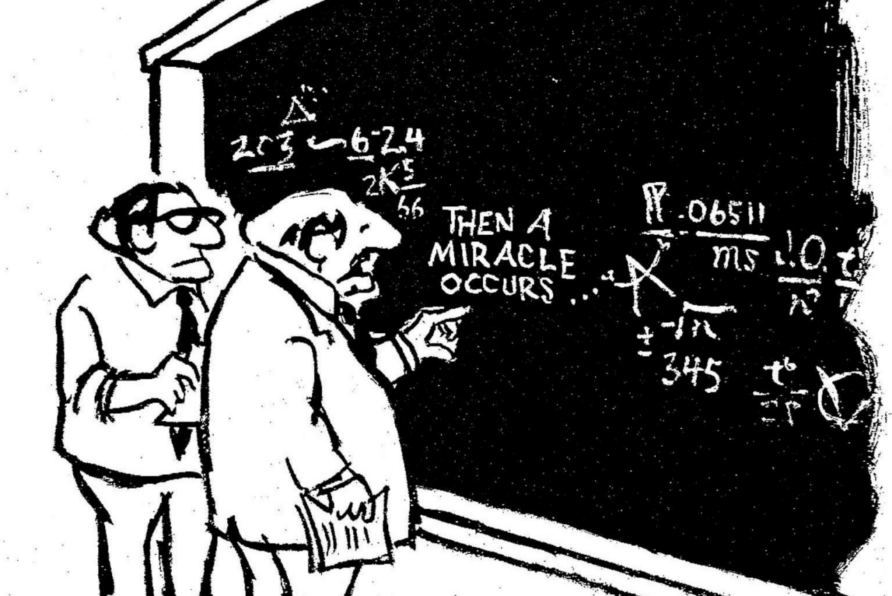
No change should be announced until there is a clear plan.
Change must be transparent and well communicated
A cynic might observe that if there is no plan, one cannot be held accountable for it.
The MoD and British Army are famously opaque when it comes to change plans and especially the equipment plan.
Journalists have to resort to FOIs to get basic financial data, the Defence Select Committee has to drag information from witnesses and milestones or changes tend to fly by without any public explanation.
Senior Responsible Owner (SRO) appointment letters are tremendously vague and the lack of detail in the equipment plan reports (now the NAO Major Project Report is no more) stands in stark contrast with our peers in the USA or France.
Harnessing societal consent and fostering a culture of accountability can only be done by publishing a plan, with milestones and decision points, measuring against that plan, and being open with stakeholders.
This is fundamental, the Army should put effort into measuring change delivery, and be honest when it goes wrong.
Change is not just about equipment or units, it should be closely aligned with performance indicators that have real-world relevance.
It should also avoid the temptation of declaring victory too early, define the objectives early on and stick to them.
Under communication is often cited as a reason for change failure, the Army should establish a dedicated change communication team as part of this transparency approach.
Change must be well resourced
Change can only be resourced if there is a well-understood and clear plan.
Too many things at once mean resources will be spread too thin, again this means simplicity and realism.
Change must have urgency
Whilst longer-term strategy will inform change, change programmes must have a sense of urgency and be deliverable within a reasonably short time frame.
Long-term change programmes will tend to degrade and organisations will find them difficult to achieve.
Culture can change over the long term, but physical changes should have shorter timeframes.
Planning for, and creating, quick wins will sustain a sense of urgency.
Building A Change Team
Change is a profession, it is not something to be done as a part-time task on top of a million other things, or by a generalist with a handful of McKinsey consultants in tow.
I get the impression that the British Army has too much leadership and not enough management, there is a Centre of Army Leadership, but we don’t provide a professional career stream for equipment support or acquisition, or change.
Future Soldier (Pallet and Bridge Chap)
The objective of Future Soldier (Pallet and Bridge Chap) is to
- Establish credibility with politicians, the media, allies, and other stakeholders by demonstrating that the British Army can deliver against a set of organisational change objectives
- Build an organisation that can flex with changing threats and offer decision-makers a range of military options supporting national security, industrial and political objectives
- Increase the proportion of the budget spent on people, accepting a smaller amount for equipment and support
It will try to do this by proposing/recognising the following
- Cash for change must be found from within
- No expansion of numbers or new legislation
- Dedicated change function
- Headquarters re-organisation
- Force design that spans multiple capabilities to generate enduring flexibility
- Rebalance towards enablers to create a more balanced force
- A significant change to the Army Reserve
The Medium Term Plan (MTP), medium-term defined as 2–5 years, a period recently defined by the head of Strategic Command recently as, ‘Next’.
Appoint A Director Of Change
The Army Board should appoint a Director of Change at an equivalent 3* level, reporting directly to the Chief of the General Staff (CGS).
Key objectives would be to;
- Build a professional organisational change team
- Design and publish an organisational change plan
- Implement the Change Programme as published
- Regularly report against the plan to the Army Board, Secretary of State for Defence and the Defence Parliamentary Select Committee
It would be a powerful message if they appointed someone from outside, a person with a demonstrable track record of organisational change.
There is a danger that it might seem like change imposed from outside rather than coming from within but The British Army has a demonstrable track record of organisational change failure and an external appointee might go so way to breaking that cycle.
Culture is such a difficult thing for organisations to shift, an external candidate for the Director of Change would be completely new to the world of the Army tribal culture, and this might simultaneously be an advantage and disadvantage.
Open and honest communication is a vital part of the change, the Director of Change must be a good communicator, approachable and frank.
This might be exploited by politicians and commenters to drive a wedge between the Secretary of State for Defence and Prime Minister, CGS and CDS.
This is why it is vital that everyone is honest about current states and future objectives, together with regular reporting
Re-Organise Army Management Structure
First, a data accuracy health warning, the images, and information below are from the ‘How Defence Works’ document maintained by the MoD, but the latest published version is from 2020.
I do not advocate for simplistic targets like ‘cut HQ posts by 50%’ because without careful consideration it just means those 50% left are still doing 100% of the work.
1SL has three direct reports, CGS has 5, and for completeness, CAS has 6
Each of those positions will also have its group of subordinates, the Royal Navy has a maximum of 4, and the RAF has 5.
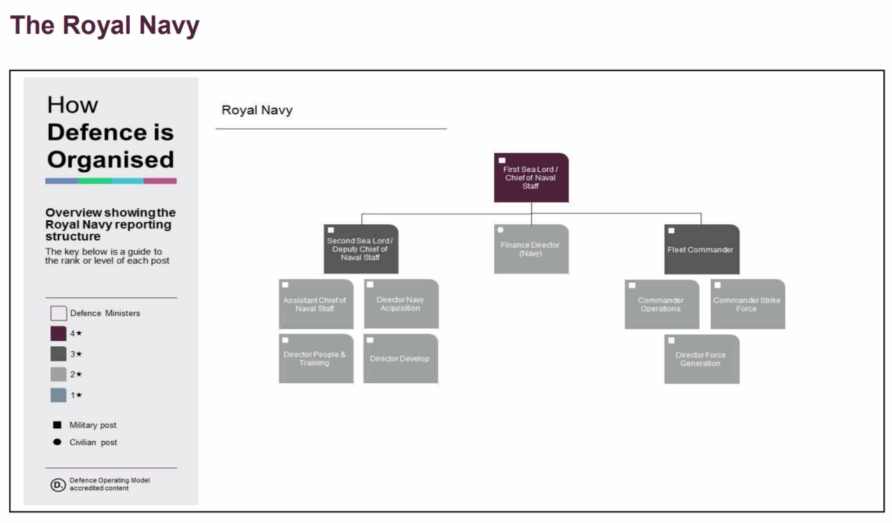
But look at the number of direct reports Deputy CGS has 11, it must be overwhelming.

Commander Field Army and Commander Home Command also have 7 each.
There is no optimum number of spans and layers in any organisation, organisational task complexity and other factors will dictate, but those differences are striking.
The Director of Resources and the Director of Finance positions in the RAF and RN directly report to CAS and 1SL respectively, the Army Director of Finance is another layer down, maybe there is a lesson there as well? I don’t think CGS has enough direct reports for the complexity of the organisation and far too much is placed on DCGS.
Using a rule of thumb that no one position has more than 6 subordinates, the proposal is to re-organise as the diagram below.
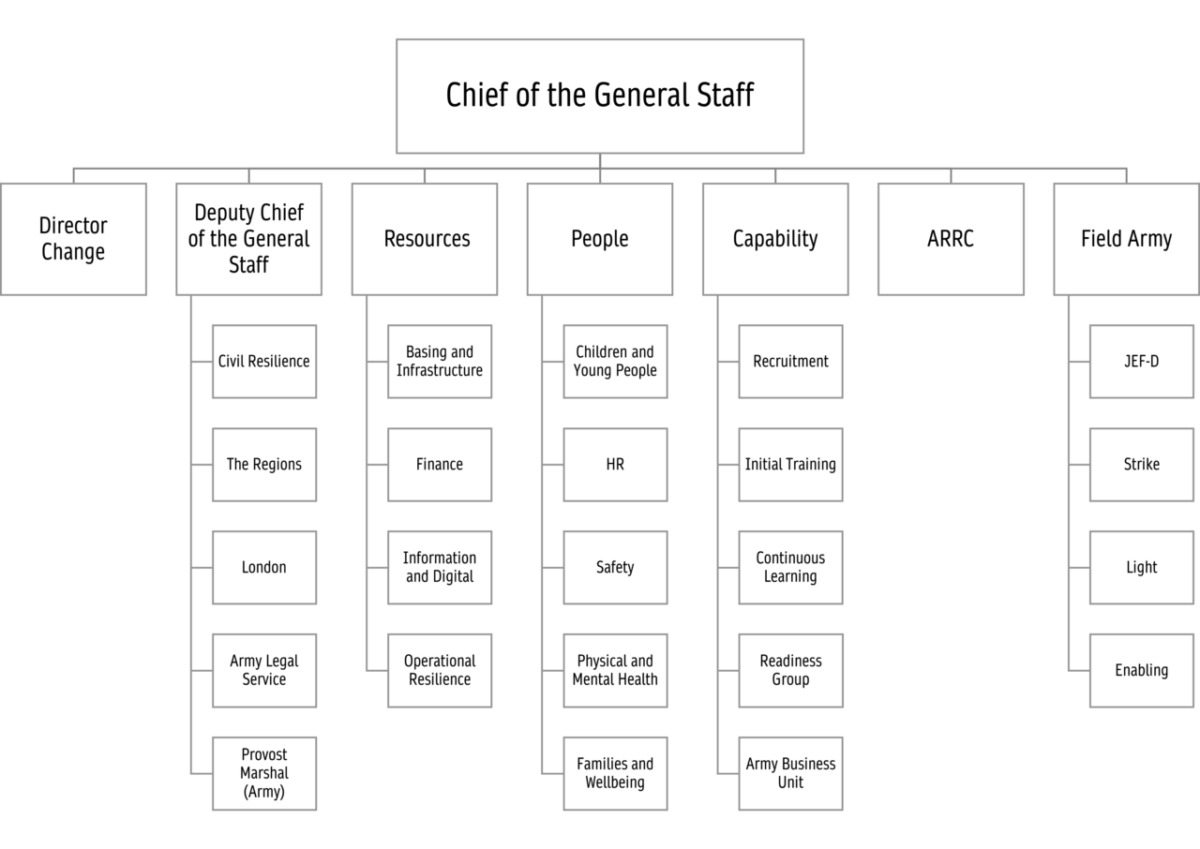
Each of the direct reports would have the following responsibilities;
- Change; As discussed above, a temporary appointment so not counted within the rule of thumb for subordinates
- Deputy CGS; Responsible for managing the Army contribution to UK Civil Resilience, Regions, Engagement and Communications, Public Duties, Legal, and Provost. There might be some specific reasons why legal and provost need to have some organisational separation.
- Resources; Responsible for basing and infrastructure, Army elements of the wider digital infrastructure, finance, and risk/operational resilience.
- Capability; the Army Business Unit (more on this later), recruitment, all training/learning, and readiness
- People; Children and Young People, HR, Safety, Mental and Physical Health, and Families and Wellbeing
- ARRC; The nature of the role requires it to be at this level
- Field Army; I understand the arguments for making aviation a 3* appointment, but not sure if I agree with them. This change would move the entirety of the Field Army into this command (except SF and ARRC), including the reserves.
This could be a more sustainable, simple, and easy-to-understand division of responsibilities with a commensurate change to the composition of the Army Board.
Deputy Chief of the General Staff (DCGS)
In the proposals below, the following key is used for ORBAT diagrams.

A reduced span of responsibility for DCGS in line with the simplification change principle
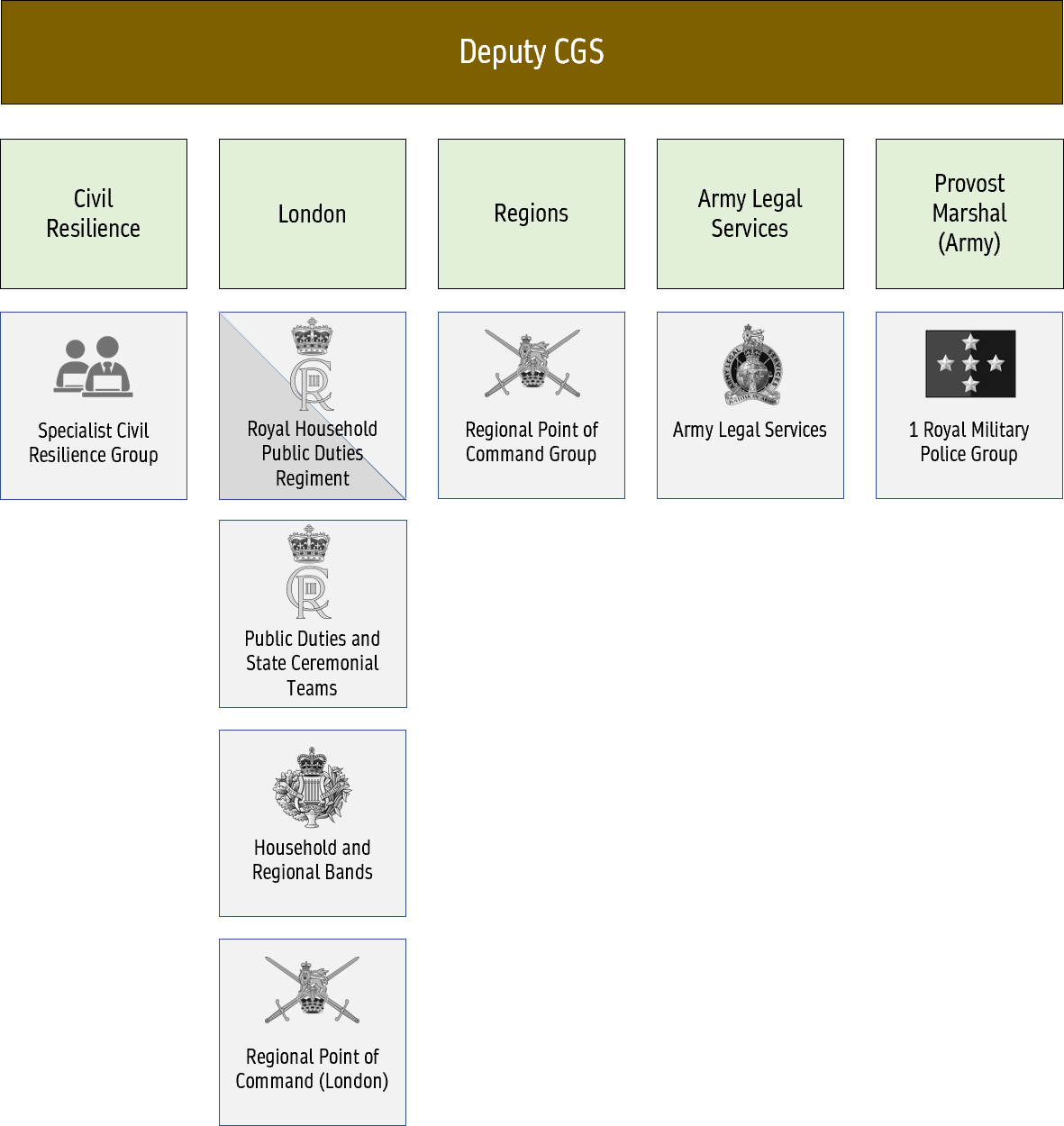
There is no avoiding civil resilience tasks, although their priority will wax and wane, and usage, is obviously dependent on external events. Closely linked with the Regional Points of Command and London District, this would be a specialist skill and command group to coordinate across the UK for civil resilience duties, aligning with the new UK Resilience Framework and utilising the Army Reserve and Regular estate and resources.
Ceremonial and public duties are part of the UK national identity and notions of the Army getting out of that business is simply not in the realms of political reality, but with the new King, there might be scope for simplification.
Although I can already hear the howls, forming a new dedicated regiment for state ceremonial and public duties would contribute to simplification and delayering.
The new regiment would incorporate regular and reserve personnel from the UK and overseas, absorbing the Household Cavalry, London Regiment, the Guards Battalion on rotation, and King’s Troop Royal Artillery. One regiment with so many cap badges would be an interesting challenge, as would a support battalion for veterinary, transport (e.g. 20 Squadron RLC) and equipment support.
All the Household and Regional bands would also be merged into a single group.
The Regional Points of Contact mirror the UK ITL 1 boundaries, aligned with Regional Resilience forums and partnerships, 13 in total, although the Army combines the East and West Midlands, and North West and North East.
Army Legal Services and 1 Royal Military Police Group would remain as per Future Soldier
Capability
A clear line from recruitment to readiness under one 3* command
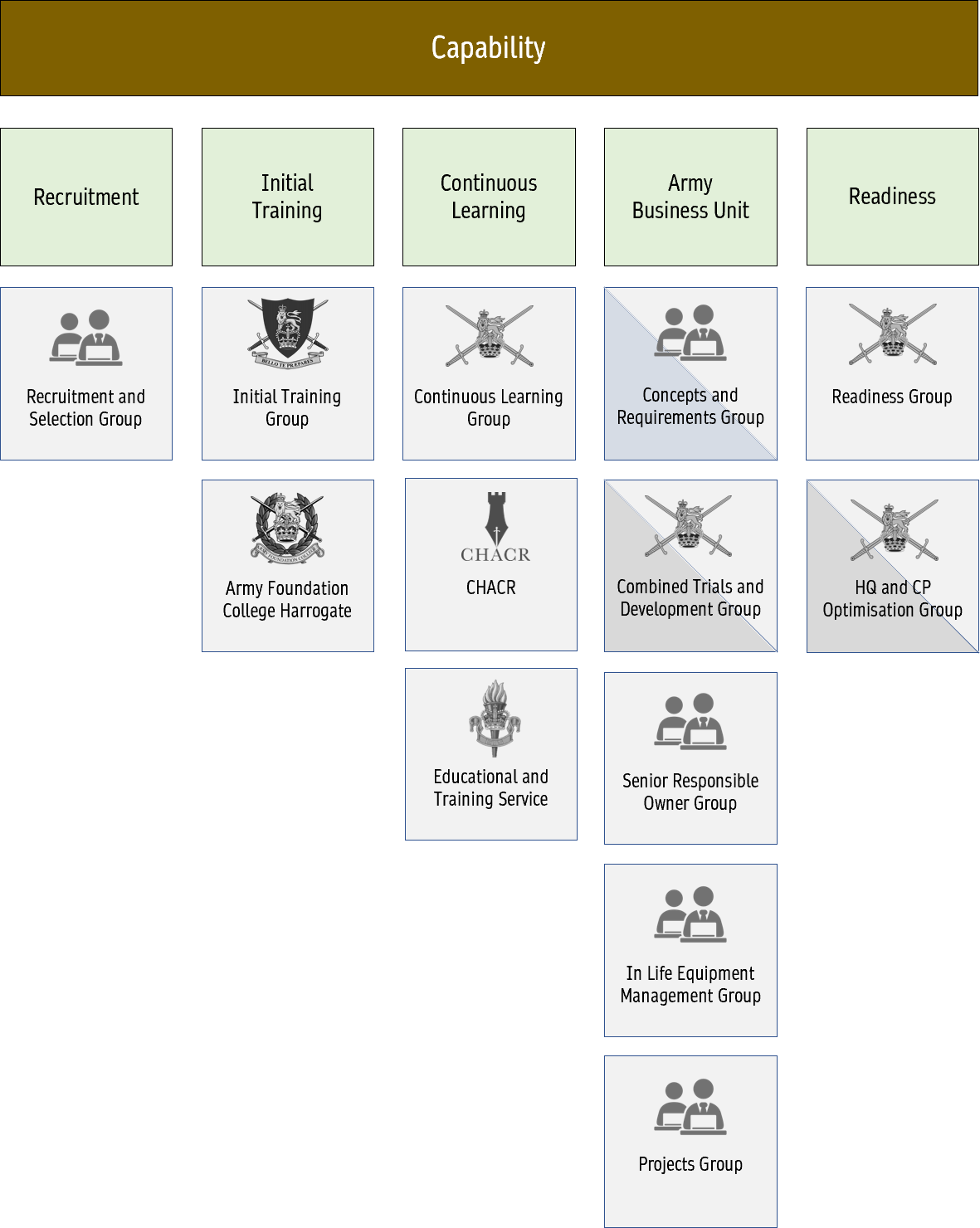
The 3* Director Capability would be primarily responsible for generating, maintaining and improving capability, in a single end-to-end command, it would be organised into five, 2* functions, with strong linkages between each.
Recruitment
Recruitment and selection for both officers and other ranks would be a combined group.
The importance to the British Army of recruitment and selection warrants a separate and dedicated group, utilising the Army Reserve estate, defence media and the network of combined recruiting locations.
Initial Training
All soldiers, regular and reserve, would complete a single common military syllabus (Soldier Academy at Pirbright) before moving on to Sandhurst or subsequent training.
Everyone in the British Army would start from the same point.
Continuous Learning
The Continuous Learning Group would be considerable, responsible for taking trained personnel from initial training, and then moving them through the learning pipeline from the start to the end of their careers.
Initial and Subsequent Training; all the various schools, colleges and training establishments, the Army Adventurous Training Group, RMAS Sandhurst, the General Staff Centre, the Centre for Army Leadership and the University Officer Training Corps.
It would also have a dotted line into the Army Business Unit Concepts and Requirements Group.
The Centre for Historical Analysis and Conflict Research would also be tasked with maintaining archive data and analysis of all major equipment projects and change programmes. providing analysis and reporting for the Concepts and Requirements Group.
Education and Training Service (ETS), no change.
Army Business Unit
It is a fair observation that the Army does not control Defence Equipment and Support (DE&S), it does not define the rules under which public spending is managed, it does not write the Land Industrial Strategy, and the defence Land sector does not have a significant export market to add momentum to change activity.
The levers of equipment plan management improvement are therefore not wholly owned by it and no amount of wishful thinking will solve this.
The objective of the Army Business Unit would be to improve what is within the purview of the British Army; aligning concepts and requirements with the Land Industrial Strategy, developing a career structure that provides stability and longevity in a post, and locking trials and development activity within the CADMID cycle.

The average programme length is 77 months and the average Senior Responsible Owner has 22 months in post, the corrosive effect of too much change and not enough space and time to specialise is self-evident.
One of the most consistent themes in the oceans of analysis completed on this subject in the last two or three decades is the importance of skills and longevity in the role.
The innovation landscape in the MoD is quite complex.
JHub in Strategic Command, Ploughshare, DSTL, the Defence Battle Lab, and the Defence and Security Accelerator, The British Army has the Army, Research, Innovation, and Experimentation Laboratory (ARIEL), Defence Ideas, and the Experimentation and Trials Group that includes all the individual trials and development units.
Establish an Army Business Unit that…
- With allies, industry, DE&S, and others, manage the Army’s equipment and capability lifecycle
- Delivers change programmes and projects
- Develop and Maintain a Readiness Reporting System
Like the Head of Change, the Head of the Army Business Unit could be an external appointment with long-term tenure, it cannot be a transient posting.
At the front end, all the Army’s conceptual development capability would fall under the remit of the Concepts and Requirements Group, with a dotted-line relationship to the joint Development, Concepts, and Doctrine Centre (DCDC), and the Centre for Historical Analysis and Conflict Research (CHACR).
A key feature of this group is that it would have representatives from allies and industry partners within it.
Any emerging concept should be subject to a sense check, asking two questions
- Are there opportunities to align and cooperate with allies?
- Is it within the realms of achievability?
Greater use of spiral development would be encouraged, with these opportunities identified during initial concept and requirements work.
A pilot trial would create a model that allows equipment designs to be developed and matured in-house, utilising a Technical Data Package (TDP) to complete manufacturing externally. This would only be at a modest scale and complexity, but it is an interesting alternative approach, with shades of the establishments of old.
All the existing Trials and Development Units would be combined into a single group in the ABU.
Making use of Army Reserve skills would also be encouraged. The Army, Research, Innovation, and Experimentation Laboratory (ARIEL) and Defence Ideas, would be split across the requirements and trials and development groups.
The Senior Responsible Owners Group would be responsible for the delivery of new capabilities and management to the disposal of existing ones.
A pool of suitably qualified and experienced persons that stay in the group for the majority of their careers would be a significant change, ending the posting cycle approach and establishing a career path.
The Projects Group would be responsible for several self-contained activities.
It would be responsible for delivering the published change programme and reporting progress to ministers and the Army leadership, including a readiness and material state dashboard.
Within a year, suitable candidates to develop and pilot trial include the following, each ready for an investment decision the year after.
- A car park pass replacement system
- Options to replace or modify PAYD
- Cat C Licence for all at Phase 2 Training
- Removal of Whole Fleet Management
- Garrison-based estate maintenance and public transport facility using a veteran-owned Community Interest Company
- An Integrated Readiness, Condition, and Stock Level Reporting Dashboard for Ministers
A comprehensive review of defence standards should also be completed within the 2-5 year period, with the objective of simplification and reduction of barriers to entry for SMEs.
Readiness Group
The Readiness Group would combine the existing Collective Training Group and Mission Ready Training Centre (MRTC) with some new Combat Manoeuvre Centre.
Its function will be to develop and maintain readiness and certification for operations through individual and collective training at scale, also utilising the overseas training estate and allies’ locations and facilities.
Wargaming, online combat gaming and a simulation centre would also be established within the Readiness Group.
HQs must be smaller, and this must come not from arbitrary slashing but a profound understanding of processes such that simplification enabled by technology can be enabled. They should also be practised in the field as often as possible.
The HQ and CP Optimisation Group, reporting to the Head of Capability, will be tasked with developing standards, creating model HQ/CP’s for personnel to be trained on and experiment with and creating a Generic HQ Standard (as part of the Land Open System Architecture — LOSA) framework.
You will note it is a hybrid Regular and Reserve function, there exists an untapped resource in the Army Reserve to inform and help guide the development of headquarters functions from their experiences in the civilian world.
Strategic Command
With 25,000 military personnel and civilians, Strategic Command is a large component of the MoD, the British Army supplies a good chunk of that
The role of the British Army in Strategic Command (formerly Joint Forces Command) is often overlooked in online discourse, but it is crucial nonetheless.
Joint Overseas Assistance Group
Overseas capability development is a strategic activity that needs a joint approach, not one that each of the single services does in isolation.
It must also include strong links with other parts of government, industry, and academia.
It starts with education
One of the lessons from Ukraine is just how quickly motivated soldiers with a solid education can absorb technical training and develop their own capabilities.
Yet most of our overseas force development seems to concentrate on a relatively narrowband of skills with little or no element of basic or technical education.
It must include industry and academia
Overseas capability development would also have a permanent presence with the Army Business Unit given the importance of equipment delivery to partners through the UK industry wherever possible.
Train and Assist
Despite the unforced error of the cap badge, I think the Rangers are actually a reasonable concept, taking on several roles that were previously fulfilled by special forces to free them up for higher priority tasks and allow us to apply influence early in the conflict cycle.
Some commentaries do perhaps stem from confusion about their role, which is the Army’s fault.
For overseas capability development, we cannot afford BOTH the Army Special Operations Brigade and Security Force Assistance Brigade as constituted.
Whilst the two are different, and soldier qualities and qualifications are different, they are sufficiently similar to warrant delivery in a single organisation, even if that organisation is somewhat segmented.
There also exists potential to make greater use of contractors and Regular Reserves to deliver much of this, it is a valuable capability, but we should have a much more hard-nosed view of how it can be delivered given our need for more mass in the field army.
Proposal
To coordinate all overseas capability development activity, establish a new Joint Overseas Assistance Group within Strategic Command.
The Army’s contribution would be a single brigade-sized force comprising the following.
- Headquarters and support group with medical, ISTAR, military working dogs, combat engineering and C-UAS capabilities, together with outreach and cultural support, and finally, Counterterrorist Training
- Three battalions of specialist infantry that can both train and accompany host nation forces
- Army Business Unit team to provide a conduit between allies and UK finance and industry. There is no subterfuge here, their objective would be to develop commercial opportunities for the UK defence industry.
- Combat Support and Combat Service Support Training Team
- Basic Skills Education Team with an emphasis on literacy and numeracy
The existing Army Special Operations Brigade and Security Force Assistance Brigade would be disbanded, with some personnel joining the new Joint Overseas Assistance Group.
All personnel joining the new brigade must have a second language or be working on acquiring one.
Rangers would no longer be a cap badge, but instead, a qualification, open to all arms. (I saw this suggestion online, and thought I would steal it!)
Not all personnel in the group would require Ranger qualification.
Joint Special Forces and Support Group
This is both a genuine UK strength that should be reinforced and one also that can be a double-edged sword.
Too many specialised units draw talent from the field army and reduce mass in the centre
Careful oversight is also required because of the less public visibility and higher levels of reporting secrecy, there have been numerous examples in NATO and the wider Western world of special forces excess.
Parachuting capability is an emotive subject. Its detractors see it as an anachronism, reinforced by its infrequent use and Russian parachute forces getting a massive kicking in Ukraine. Because of this, the political risk, and therefore decision-making on its use, is increasingly unlikely to be held at the Army level.
This excellent Wavell Room article describes the problem really well.
There is also the obvious problem of having parachutists with not enough aircraft, and for those aircraft that do remain, their ongoing issues.
Yet, the French example in Mali of using parachute forces to open an airfield is a good example of their utility.
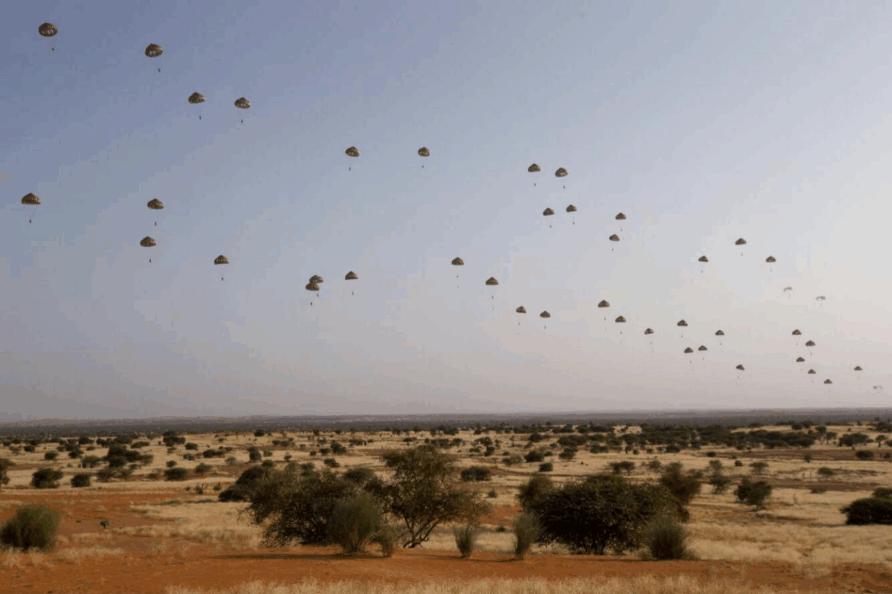
Whilst the image above got the headlines, what was more important was the image below.
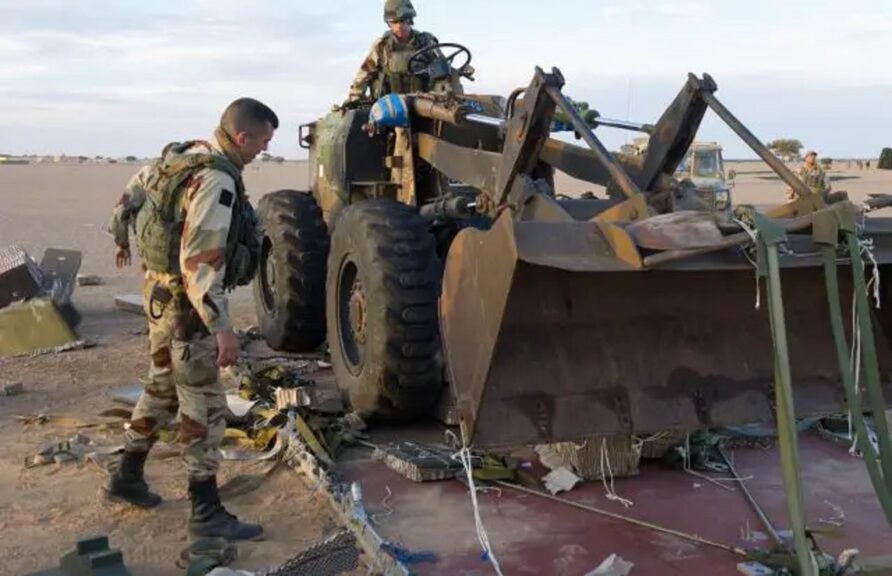
This is a perfect illustration of a niche capability, but one that is critical.
As recently argued in the follow-up to the linked Wavell Room article above, moving the parachute capability to a lower risk threshold area of the joint force will enable its ongoing development and use.
I agree
The Parachute regiment en-masse would be moved into the Special Forces Support Group, noting that 1 PARA is already there.
4 PARA (Reserve) is not shown in the diagram below, will cover reserves more fully in the next post.
The enlarged SF Support Group would also be tasked with developing and maintaining a Joint Personnel Recovery capability, and a number of additional specialist parachute-enabled functions, especially basic airfield opening, air traffic control, medical and ISTAR.
The tactical air landing capability would be retained by this enlarged group, and equipment would reflect this.
A new Battalion Support Group would be established (not dissimilar to the Gurkha ARRC Support Battalion) that would incorporate a range of CS/CSS capabilities, notably combat engineering, medical, logistics, indirect fire, and ISTAR. That might seem like a broad span of capabilities for a single support battalion, and it is, but their scale is not the same as 16 AAB.
16 Air Assault Brigade would be disbanded and replaced with another structure that provides a very high readiness air mobile capability (more on this later)
As described in this post, developing a utility fixed-wing aviation component would not only provide additional speed and reach for this group, and it would also enable parachuting qualification to be maintained economically.
A new Army Air Corps squadron would be established to develop this.
Finally, an external civilian governance framework for these functions would be developed, potentially involving the Defence Select Committee.
This new group would perhaps be more like the US Army 75th Ranger Regiment, but wouldn’t be called that for obvious reasons, and would require long-term investment.
HQ ARRC
no change to Future Soldier except the move of 104 Theatre Sustainment Brigade
NATO headquarters and commands are relatively complex, and like any alliance, somewhat beholden to alliance politics and national prestige.
The US always provides fills the Supreme Allied Commander Europe (SACEUR) and, by tradition, the UK generally covers the Deputy Supreme Allied Commander Europe (DSACEUR). Supreme Allied Commander Europe (SACEUR) has nine Graduated Readiness Forces (Land) Headquarters under Operational Command, one of which is HQ ARRC.
With a history going back to 1 (British) Corps, HQ Allied Rapid Reaction Corps (ARRC) is a 3* HQ and command function that can operate as a Corps HQ, a Land Force Component Command and a Joint Task Force HQ
It also assumes the role of NATO Response Force (NRF) Land Component Command on a rotational basis.
Although it is multinational, the British Army hosts ARRC HQ at Imjin Barracks in Gloucestershire and provides approximately 60% of the personnel, including a logistics brigade and a signals brigade (although those brigades are not just for HQ ARRC)
The Gurkha ARRC Support Battalion is also an interesting case study in establishing a US Army-style combined support function
HQ ARRC retains a strong reputation in NATO, but as the British Army gets progressively smaller, others such as Poland expand, and new members join, I expect HQ ARRC will come under political pressure, as will the DSACEUR position.
There is a strong argument to develop HQ ARRC further, especially as a Corps HQ for the Joint Expeditionary Force (JEF) nations.
One change, stop the Future Soldier move of 104 Theatre Sustainment Brigade into ARRC and back to the Field Army.
Field Army Design Principles and Assumptions
Design and operating concepts for the bulk of the field army, organising around the concept of a strike division bookended by smaller armoured and light-role brigades
Unit names
In the diagrams below, I have removed regimental titles and used either a generic icon or the Corps emblem where applicable.
One cannot ignore the real-world influence of service politics, and perceptions of equity between the home nations and devolved administrations.
These things exert the gravitational pull of a small moon.
There are no holy ORBAT scriptures
Allies and potential enemies alike all have different approaches to force design, mixing wheels and tracks, regular and reserve, and with square, triangular and oversquare structures.
In recent history, we went from an armoured division in 1945 having a single motorised infantry brigade and a single armoured brigade, to one at the end of BAOR that included having four or even five, Future Soldier 3 DIV has two armoured brigades and the Deep Recce Strike Brigade.
Square or triangular is a never-ending debate, the larger the division or brigade the more power and resilience it will have, but it will be more unwieldy and have a larger support requirement.
Swings and roundabouts.
Into the subunit
There is no low-level design in this article, no discussion of section size or how many tanks per troop there should be in an armoured squadron.
This article is long enough as it is, there are many constructive discussions on these subjects for the future.
Battalions and regiments are not all created equally, even those in the same Corps or Arm may be structured very differently from one another.
The Honourable Artillery Company for example is not actually part of the Royal Artillery and yet provides light gun operators as individual reinforcements for 7 Parachute Regiment Royal Horse Artillery, in addition to a number of specialist surveillance and reconnaissance functions as part of 77 Brigade.
Nothing about the British Army is simple.
Resource realism
As most of you will know, the horizon of my fantasy fleets generally ends at better pallets, but this series is also an attempt at resource realism.
It does not require any uplift in Army personnel, recognises existing equipment programmes, and where applicable, will indicate a gap that should be considered a priority into the longer term, beyond the 2-5-year timeframe of the Medium Term Plan.
Balance is all
It could be argued that the preponderance of combat arms in Future Soldier is a product of cap badge chicanery, a legacy from Northern Ireland, the politics of devolution or requirements to maintain rotational forces in Cyprus, Brunei, the Falkland Islands, and for public duties and civil resilience, but even with those considered, it does seem to demonstrate a particular imbalance in this regard.
Combat Support (CS) and Combat Service Support (CSS) are not burdens or a tail to be reduced, they are essential pieces of the jigsaw, no more or less important than any other.
Whilst I won’t go as far as suggesting infantry battalion A should be converted to RLC Regiment B, I will indicate where the headcount should be transferred.
Consistency and repeatability create stability
I am going to try to design with consistency in mind, brigades of similar structure, integral support wherever possible, and simplicity from the rule of three.
Design should result in an organisation that can bend with the prevailing wind, and not be broken by every stiff breeze that comes along.
Reserves in the right place
A design principle that will no doubt be controversial is the role of the Army Reserve, I will go into more detail later but I think for certain functions they are indispensable, but for others, contrary to the practical reality of their mobilisation and readiness states.
At the heart of the Army’s integrated force model is an assumption that reserves can be elevated to higher readiness states in the time that a conflict goes from cold to hot, I think we should be more rigorous in testing this assumption.
They are significantly cheaper than a regular soldier when not mobilised but overall, there is a cost, and that budget might be better used elsewhere.
Centralisation or Distribution
Future Soldier (and Army 2020) centralised some capabilities.
This is understandable when you want to retain or create a critical mass, develop excellence and compensate for the simple fact we don’t have enough to allocate to brigades.
Air defence is a good example of this.
Where possible, I do think the advantages of having these capabilities as far as possible organic to the Brigade is worth pursuing within an overall force design.
Operating Concepts
The purpose of the design described above is intended to not only build on strengths such as special forces and conflict reduction by security assistance but also free up some resources for the rest of the field army.
Observations from Ukraine
Accepting that it is probably too early to draw definitive conclusions, one of the more interesting observations I have seen made from the Russian invasion of Ukraine is the concept of the first and second battle.
First battle; Territorial defence can be quite effective with light forces, especially if they can utilise combinations of local terrain knowledge, protected mobility and fixed defences, and good intelligence, surveillance and reconnaissance that allows long-range weapons to target the enemy deep.
Second battle; Ultimately though, a more powerful and numerous enemy may make progress against these lighter forces and deep battle capabilities, and for the defender to go on the attack, the hard-hitting heavyweights will be needed.
There is a bucket load of others, of course, many simply reinforcing things already well known
Applying that to the British Army
Mining for relics; Although many see FRES as a failed vehicle project that eventually morphed into Ajax and Boxer, FRES was actually a force design and operating concept, the result of an enormous amount of research, and genuinely joined up.
Although the geopolitical and technological environment was different, it grappled with many of the same problems as Future Soldier, concluding that the UK was best served by a medium-weight globally deployable force. This enlarged medium-weight force would be bookended by a smaller heavy force and a smaller light role force.
Whilst previous concepts favoured the procurement of cake, and the consumption of cake, FRES at least recognised you could not have everything at a large scale and was decisive in its intent to make a priority call.
Without wishing to sound like Grandad FRES, I think that logic still holds today.
Strike to Deep Recce Strike; Strike was also a good concept, hampered by poor articulation, overly complex language, too much arguing about wheels and tracks (even FRES had both), a lack of enablers and an assumption that it would enable a division that in reality, wasn’t there.
Deep Recce Strike is also a good concept, but does it run the risk of making a similar set of questionable assumptions?
The Medium-Term Plan
The Medium Term Plan is centred on building 5 components within the next 2–5 years, accepting that some of them will not be wholly complete within that time.
- Armoured Brigade within a multinational division
- Three Light Brigades
- Strike Division
- Enabling Command
- Reserve Forces
JEF Division
The Joint Expeditionary Force is a security initiative with the UK and Denmark, Estonia, Finland, Iceland, Latvia, Lithuania, the Netherlands, Norway, and Sweden.
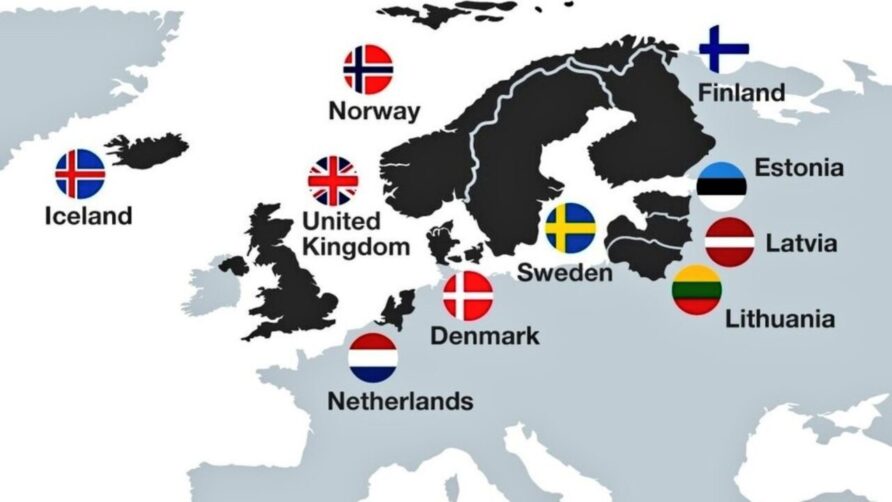
With Finland now a member of NATO, and Sweden likely to be one soon, one of the guiding principles of JEF, including non-NATO members, somewhat evaporates.
But this is OK, things evolve, and I think JEF not only has a great deal of defence and diplomatic benefits but also for industrial, energy, academic, and research.
Each of its members occupies the ‘Northern Arc’, has shared interests, similar political and industrial landscapes, and are members of various international organisations and alliances.
Many operate the same equipment, be it F-35s or CV90s.
This is a good foundation on which to build more, the JEF Division.
First, gain consent
The JEF nations have their defence priorities to attend to, and many also have similar multinational arrangements, so there is no expectation that they would be willing or able to develop this idea.
Approaching them with both humility and a credible contribution seems like a suitable approach
Standing divisional HQ
Assuming reception to the idea is positive…
Building on existing arrangements, the JEF nations would generate a joint divisional HQ, likely forward deployed, but sufficiently far back and protected. Alternatively, it could be based at Northwood with other NATO command functions, although that might not be best from a political perspective.
Despite the naysayers, the British Army is a top-tier nation when it comes to leading a larger force, and we would use this experience as part of the offer.
Building capacity at the divisional level would also be a principal objective of the HQ.
Readiness and basing
The Armoured Brigade would be able to generate three or four battle groups, and it is on this basis that the readiness cycle would be maintained.
It is unlikely to be feasible to forward base and maintain at very high readiness, the JEF-D nations would therefore agree to an appropriate deployment and training cycle, together with basing and exercise areas.
The goal of this agreement would be to aim for collective training at the full division level every three years.
Defence industrial matters
Defence alliances are built on shared interests, but they are lubricated with mutual benefit.
A brief look at JEF nations’ defence industrial organisations shows Saab, Patria, Kongsberg, BAE Hägglunds, Sisu, Terma, Nammo, DAF, and Damen.
All make good products, some of which we have in service.
Developing joint projects, maintaining combined stock levels, or just straightforward contra deals are good methods of lubrication and another job for the Army Business Unit.
Structure and Capabilities
The reason to have heavy armour is to concentrate on the attack, using their protection, mobility, and firepower to inflict dislocating shock on enemy forces, they are not called battlefield bullies for nothing.
A conventional armoured division is a three-legged stool, with a bunch of support capabilities sitting on top.
One leg of the stool would be the Credible-Armoured Brigade described in earlier parts of this series.
The structure below is deliberately conservative, square even. It might be perhaps too large when set against modern norms
Spreading it out over two brigades is an alternative I considered, but it means either fewer resources are released to the Strike Division or an over-reliance on reserve capacity.
The balance of the manoeuvre brigades and divisional support would be provided by the JEF nations.
The REME and RLC close support regiment/battalion might need to be strengthened given the additional armoured regiment.
Equipment
Although there are some technical advantages with Boxer RCH155, with Archer now purchased, and it is manufactured by a JEF nation, it makes sense to me to use it for the Medium Weight Division close support regiments.
If JEF is to mean anything, it must include defence industrial matters.
CR3 would continue as planned.
There may be scenarios that require a squadron of tanks to be attached to a larger force, the FIND Brigade for example, or even in some future counter-insurgency campaign, this might be a good use of the Army Reserve Armoured Regiment.
FV430/Bulldog replacement might happen one day in 2077.
Perhaps tracked Boxer or a larger version of the UC23 I proposed here
On Ajax, a vehicle on which so much has been written, I think it comes down to a simple decision point.
Ajax enters service…
Assuming its current problems are resolved (and not just mitigated with better seats and ear defenders), and assuming reliability growth trials are passed, Ajax will enter service. Being uncharitable, we may have too many on order and built DRS around that simple fact, but in my force design, it will not be in the Strike Division.
Logically, this means we either place lots in reserve, dispose of, or re-use.
With Warrior now facing the end of service life and a basic requirement for an armoured vehicle for both infantry, cavalry and support capabilities, it appears that the least bad option would be to reverse all Ajax vehicles into the JEF-D Armoured Brigade.
I don’t offer any definitive feasibility for this but the numbers are about right, although the variant split is not.
It might be possible to add a medium calibre RWS to Ares and make a viable Warrior replacement. It might also be possible to do some more drastic surgery to the scout vehicle and convert them to Ares/RWS.
There are plenty to choose from Moog, Kongsberg, Rafael, AEI, and CMI, to name but five. These would bring into question the future of the 40 mm CTAS unless it could be integrated, another one to argue over, with each of the options having a range of industrial and commonality benefits.
Any of these will obviously add additional cost, risk and time, but it would at least equip the armoured brigade with a well-protected and modern vehicle that would allow the British Army to at least extract some value from the four-decade FFLAV to Ajax journey.
Ajax does not enter service…
Of the eight JEF nations with land forces, six of them operate CV90, it is about as close to a standardised vehicle as one could get.
If Ajax does not enter service (for whatever reason), the obvious answer is CV90.
It has a large user community, mature, capable, and well-established within the environment it will most likely be used in.
It is also made by, ultimately, a British company.
Risk
Whilst acknowledging that this proposal ignores the upcoming three-year-long VJTF roulement, the concept of a JEF Division is designed to provide skin in the NATO game, retain armoured capability as a hedge against risk, and free up resources for other capabilities.
The obvious risk is that the JEF nations show no interest, if that were the case, the armoured brigade would continue as an independent Brigade.
Proposed ORBAT
Light Brigades
Each would have a similar structure and also retain the familiar regiment/battalion split.
The Light brigades should all be equipped consistently, HMT and whatever replaces Land Rover.
HIT-derived vehicles will have utility across all, another area for sustained investment.
It would also be good to see some UC23 and even larger vehicles for the High North, BVS10 and others for example.
Light Brigade 1 (Air Mobile)
I get that many rightly hold 16AAB in high regard and would consider this an act of wanton vandalism, but I think it would have a wider benefit.
Recognising Air Mobility Constraints
Force design must be rooted in aircraft characteristics and their likely availability rates.
Payload and range are related, the heavier you go, the fewer miles you are flying, unless you can be refuelled mid-air.
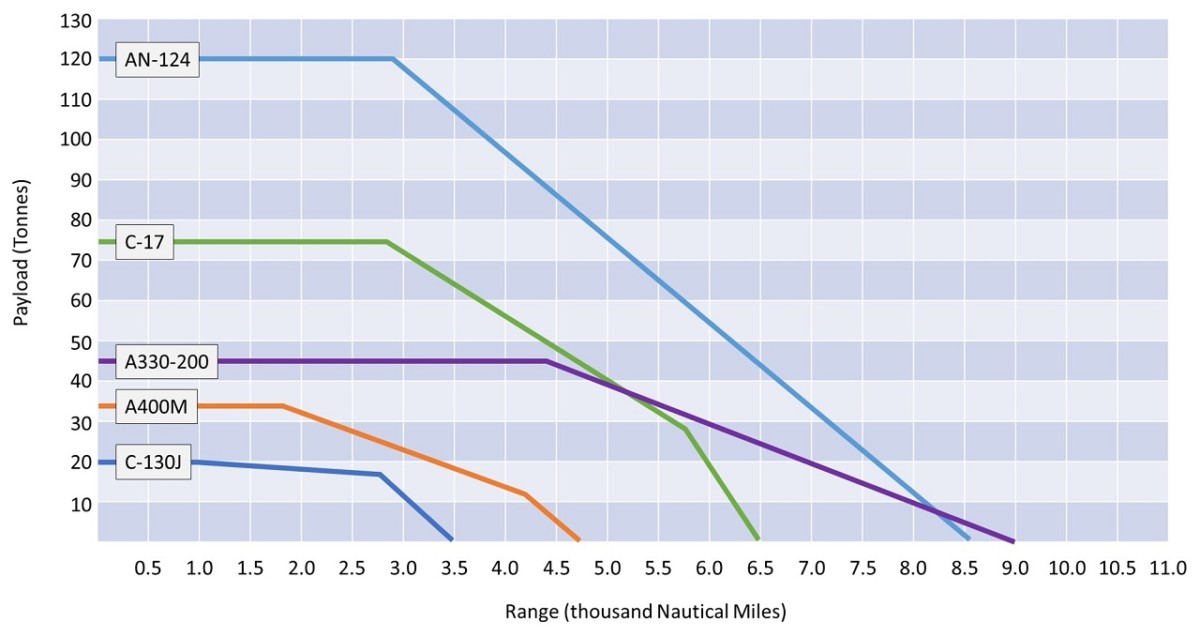
The map below shows a 2,000-mile radius from Brize Norton, Gibraltar and Akrotiri.
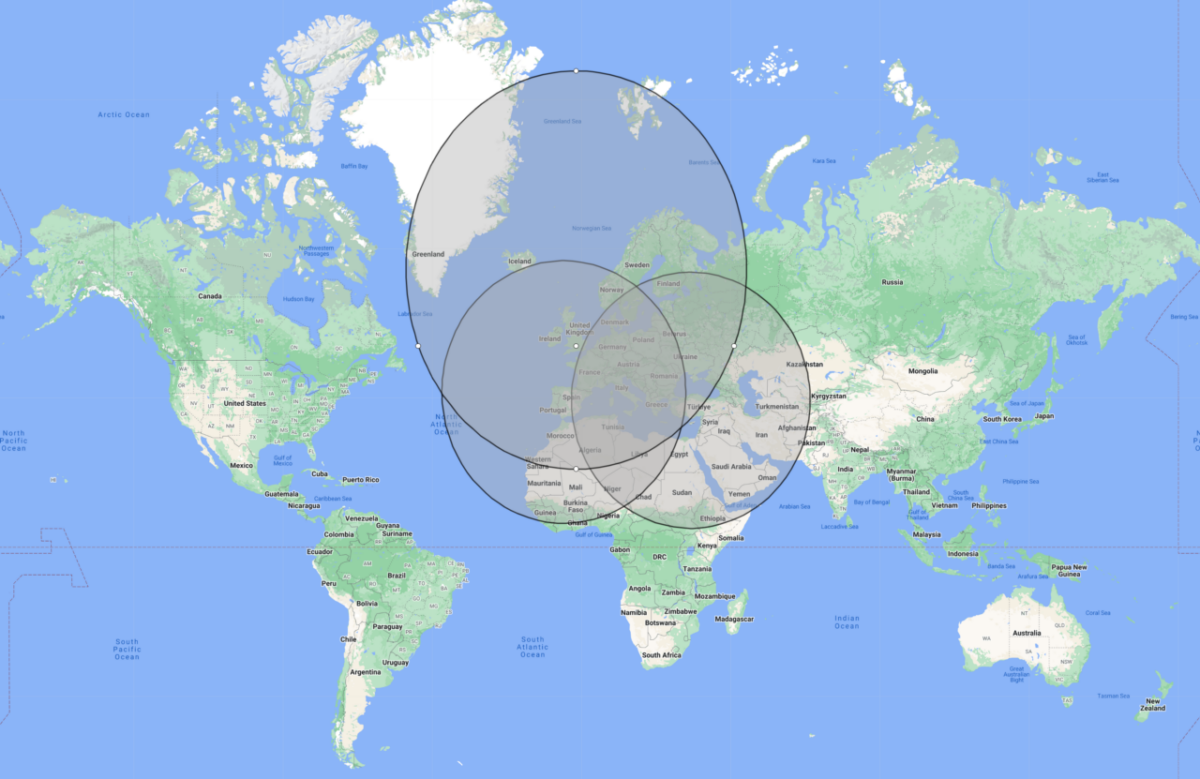
An A400M would require inflight refuelling on the return leg or refuelling at the destination. A C-17 could do the same round trip unrefuelled with a slightly smaller maximum payload.
At that range, the maximum payload would be just north of 30 tonnes for an A400M and 70 tonnes for a C-17.
If we use a single C-17 as our aircraft of choice, held at R0, it could transport a light role company of approximately 100 personnel on the sidewall seats and four 15-seat pallets, leaving 5 pallet positions free. A pallet is roughly 2.6 by 2.1 m so 10m would be available for stores or a couple of Landover-sized vehicles.
Switch that C-17 for a pair of A400M, and they would provide the same payload weight but a much larger volumetric and floor space capacity, and a greater choice of airfields.
For a longer build-up at greater notice, a lift package of ten A400M and four C-17 aircraft could move a total payload of just under 600 tonnes in less than 24 hours, double that if we could squeeze in a repeat flight. A full light-role battalion with sixty pallets of stores is well within 300 tonnes (I would have to check the pallet positions) but they wouldn’t have any support.
It is the support that brings the weight and volume, vehicles and plant, their fuel and spares, generators and complex weapons, medical supplies and tentage, the list goes on, and that is before we add food, water and ammunition for the period beyond 24 hours.
This is a long-winded way of saying if you want a high-readiness air deployed force at speed and reach, there are practical limitations to what can be achieved, even though it is hugely valuable and versatile.
Structure and Capabilities
To overcome access denial challenges, the brigade would need to have the transport means to push out some distance from the airfield it lands at. Vehicles will add to the CSS bill and slow down deployment by air, but in many situations, there is no other practical choice.
The Light Recce Strike Battalion would remain (I like this concept), joined by three light-role infantry battalions.
Combat Support and Combat Service Support would be a difficult challenge as many will have completed parachute training but not all will have moved over to the SF Support Group Composite Support Battalion.
The RAF Regiment has a range of specialist capabilities that are complementary to the air mobile brigade and so should be integrated with the Brigade HQ on a capability development basis. Frankly, there is far too much childish nonsense when discussing the RAF Regiment online, closer integration between the air mobility brigade and it is a must.
The Forward Mounting Group at RAF Akrotiri would continue to be used for staging, acclimatisation, and training, with stores and equipment held at high rates of readiness there.
In a conventional conflict, the Brigade could act as a highly mobile reserve and ATGW force, shades of 24 Airmobile Brigade
Risk
The most obvious risk is breaking up a functional and high-readiness brigade, together with the inevitable problems of which of the CS/CSS would move to the SFSG and which would remain.
I don’t mind admitting I have no idea about risk mitigation for this.
Light Brigade 2 (Multi-Role)
Light role forces are inherently flexible.
Structure and Capabilities
There are many environments and roles for such a light role brigade and within a training and readiness cycle they could focus on forests, the high north, jungle or urban.
This focus could depend on the prevailing risk, at the minute, a focus on the Artic and High North would make sense, and align with the JEF group.
It would also have its eye on the Falkland Islands. I know it is rather fashionable to laugh at any suggestion of a second Falklands Conflict, but it is a risk we must take seriously.
The brigade would be conventionally structured, taking a cue from the Air Mobile Brigade in its use of light vehicles for simple transportation and the Light Recce Strike concept.
Those vehicles might be changed depending on the environment the brigade was concentrating on at any one time, drawn from the Enabling Division (more on this later)
Although not shown, an additional infantry battalion would be attached for rotational purposes (Cyprus and Public Duties)
Risk
In moving existing units around to determine feasibility, this is one that had several gaps that threaten its viability.
The first gap was that of combat support, Royal Engineers and Royal Artillery.
One proposal is to fill this gap by re-tasking those regiments attached to 3 Commando Brigade. With the Commando Force moving on a different path, I think it makes sense for their Army elements to do likewise.
If this is not feasible, it would remain a gap that would be filled by moving the headcount as described above.
The second gap is combat service support, specifically REME and RLC close support battalion and regiment respectively, given the relatively modest CSS requirement, it would also be filled by headcount transfer.
Light Brigade 3 (Multi Role — Reserve)
The other two brigades in this division have no reserve component within their structure, but this brigade would be wholly reserve
Structure and Capabilities
To build mass, ensure sustainability and encourage interoperability, the brigade would be structured identically to Brigade 2.
Brigade tasks could include rear area security, convoy and flank protection, key site protection in the UK, and prisoner handling.
Recruiting and basing would be regional and each infantry and cavalry component would be oversized to provide resilience.
Risk
Although it would be a departure from the existing integrated reserve concept I think this is low risk, it defines a specific set of roles, mirrors a regular structure and would still enable regional recruiting.
Vehicles and equipment would need to be the same, a risk area.
Proposed Light Division ORBAT
Strike Division
No one in the Medium Division should be thinking about a fair fight.
If we are facing a resurgent China-backed Russia or many other potential adversaries in the Middle East or Africa, it is unlikely that we will outnumber them in either equipment or personnel terms.
This is a reality we must face head-on.
We have to think differently, exploiting technology to compensate for our relative lack of numbers.
As interesting as the new US Army 2030 Armour Division (Reinforced) is, there is no way we could resource something similar.
A Revolution in Reconnaissance Strike
There appears to be a lot of what I call ‘tradition drag’ with reconnaissance, with many too closely associating it with cavalry roles such as screening and flank protection.
Reconnaissance is a capability, not a specific cap badge or vehicle, and in a contemporary environment, fusing information hoovered up from a mobile network is as important as having eyes on a target from a hide, using civilian surveillance satellites and open-source intelligence, or fighting for information when needed.
Does Future Soldier place the Army in a good position to exploit rapidly changing technology that delivers comparative advantage and allows us to avoid a fair fight?
Deep Recce Strike
Deep Recce Strike seems to be based on experiences from the 1991 Gulf War where formation reconnaissance was grouped with divisional artillery to engage key Iraqi targets.
There are a few problems with translating this to a contemporary environment.
- The terrain is more cluttered in most likely scenarios and locations
- Enemy forces in that environment are more likely to have a much wider range of much more lethal weapons and detection capabilities than the Iraqis in 1991
- Ajax-based DRS cavalry regiments operating at extended ranges will have a high logistics and mobility support demand, exposing support vehicles to those threats in the second bullet point
- Allied forces had destroyed the Iraqi air force, the formation reconnaissance units could operate in the knowledge that what was above them contained no threat
Ajax is heavy, and because it is not amphibious it will be required to use existing bridge infrastructure. Because of this, it will struggle with a lot of infrastructure (even in Europe), and it requires a great deal of fuel and support, including bridging (there is no Ajax bridging variant on order).
It is large and with a significant noise signature. It is difficult to envisage Ajax finding many enemy forces that don’t know they have just been found, especially if they get into a fight with Ajax.
The element of surprise is lost, along with opportunities to strike as enemy forces will likely relocate.
On the flip side, Ajax is a well-connected and well-protected family of vehicles that can exploit other sensors, including dismounted personnel.
Many of its critics I think miss these points, it is always about trade-offs.
As briefly touched on above, Future Soldier centralises several key functions, the ISR group in Field Army Troops, not in 3 DIV Deep Recce Strike Brigade, likewise with the Royal Signals Cyber and Electronic Effects Group. The Army Air Corps Reconnaissance squadrons in Wildcat are held centrally in Joint Helicopter Command.
These are understandable decisions for high-demand low-volume capabilities, but I would argue that they should be distributed wherever possible and where centralisation makes sense, into a single capability-based group.
This group should be able to exploit information from multiple sources, analyse it, and quickly target it with a range of weapons.
The best way it can do this is to make sure the enemy that is about to receive a GMLRS malleting doesn’t know it coming, creating the conditions for a thoroughly ungentlemanly surprise.
It also ensures that reconnaissance capability is preserved because it avoids fights it won’t always win.
Specialist scouts and artillery observers are extremely effective, but they need to be provided with protected mobility because they are, you know, specialists.
This is an area where the separation of infantry, light cavalry and forward observers (special observers) needs to be challenged.
Putting the Strike in Deep Recce Strike
This might be controversial, but the divisional artillery in the strike division would not contain any 155 mm artillery and would be wholly based on rockets, the Land Precision Strike missile and armed UAS/Loitering Munitions.
Electronic effects also.
The two mechanised brigades would also have an artillery close support regiment with 155 mm and other precision capabilities such as Exactor in the short term.
Nothing but Wheels
A medium-weight wheeled force has better transportability than a heavy-weight tracked force but can still retain excellent levels of protection, whilst having the dismounted infantry strength to operate in complex and urban terrain
It requires fewer logistics resources and can operate for longer periods without maintenance.
Whilst the norm for Boxer transport might be the same Heavy Equipment Tractor as used by a Challenger 3, the point is it doesn’t need to be.
It allows intent to be signalled and quickly moved to any emergent risk area
Whilst it is deploying, lead elements can be moved even more quickly to start taking up forward observation positions, liaising with local forces, using its UAS, emplacing unattended ground sensors and exploiting strategic sensing capabilities.
Not only would the main force arrive in good order relatively quickly, but it would also be well-informed.
Structure and Capabilities
The Strike Division would have five key components.
- Two Boxer-based mechanised infantry brigades
- FIND Brigade
- Deep Strike Brigade
- Support and Protection Brigade
- HQ and Information Fusion Group
Each of the two mechanised infantry brigades would consist of…
- Brigade HQ, Signals Regiment and Reconnaissance Squadron
- 3 combined arms battle groups
- Close Support Artillery Regiment
- Close Support Engineer Regiment
- Combat Service Support Battalion (Medical, Equipment Support and Logistics)
I did say I wasn’t going to go into too much detail on the subunit design but the battle groups would consist of an HQ and Support Company, a Battle Company x3, and a Cavalry Company, approximately 700 personnel.
The FIND Brigade would consist of…
- Brigade HQ and Signals (including Honourable Artillery Company)
- FIND Group 1 (Boxer based)
- FIND Group 2 (Jackal based)
- Medium Altitude UAS Regiment
- Military Intelligence Battalion
- Combat Service Support Battalion (Medical, Equipment Support and Logistics)
In addition to specialist scout infantry/cavalry, each FIND Brigade would include a signals’ intelligence collection group, mortars, weapon-locating radar, artillery observers, and a tactical UAS group, merging several existing units.
Their main role is to find targets without being observed, to be followed by…
The Deep Strike Brigade would consist of…
- Brigade HQ and Signals
- Two deep fires regiments (GMLRS, Land Precision Strike and Loitering Munitions)
- Combat Service Support Battalion (Medical, Equipment Support and Logistics)
This does create a 1-to-1 relationship between the FIND Groups and Deep Fires Regiments, if additional resources were available in the future, you could build an additional artillery regiment, preferably two.
The Support and Protection Brigade would consist of…
- Brigade HQ and Signals
- Medium-range air defence regiment
- Two logistics regiments, including logistics UAS to support the FIND Brigade
- Division Medical Group
- REME Division Support battalion
- RE Division Support Regiment
- Signals Regiment
The divisional Support and Protection Brigade would include manoeuvre support to ensure progress can be maintained on road marches, medium-range air defence, logistics (especially fuel), decoy and deception and additional logistics and equipment support.
Given the likely prevalence of loitering munitions and UAS on future battlefields, the divisional support and protection brigade would also include medium-altitude air defence capability.
Equipment
The bulk of the investment should be in the Strike Division.
Doubling down on Boxer to increase fleet size, drive down costs, improve and sustain industrial resilience, and exploit modularity should be one of the strategic equipment objectives for the British Army in the following decades.
That means all the variants.
In the interim, it might be wise to pursue a structured programme of Mastiff/Ridgeback upgrade as recently completed for a small number as an interim measure whilst Boxer is building up.
There is also a case for a smaller and cheaper protected vehicle such as the Patria 6×6, Fuchs or Pandur, or a new design.
In this proposal, there is no role for the M270 Launch System for GMLRS, which is unfortunate as the MoD has just contracted with Lockheed Martin for an upgrade programme. If this could be cancelled, good, if not, there might be options to either move them to the Army Reserve to support the JEF-D or explore options to complete the upgrade programme and sell to any of the JEF nations.
The obvious choice for a wheeled rocket system to equip the Medium Weight Division would be HIMARS on the FMTV truck, but this should be roundly rejected.
First, the vehicle is not in service with the UK (except a version for tankers) or any of the JEF nations, and second, it is sized for a C-130 carriage, an aircraft we will no longer have in service.
There might be options to integrate the HIMARS or MLRS launcher onto a demountable flat rack or straight onto a truck (as Poland is doing, and South Korea has done), but there are alternatives such as the Elbit PULS, purchased by both Denmark and the Netherlands, both JEF nations.
Land Precision Strike is key to the development of the Medium Weight Division and should be prioritised within the complex weapon pipeline.
The FIND Brigade should also attract a significant proportion of future investment, and the communications and analysis systems to reduce the time between them finding something of interest and a GMLRS/LPS warhead appearing.
This find-to-strike cycle is key to making the Strike Division dangerous.
And Brimstone, obvs.
Risk
Straight out of the gate, I must recognise that whilst the proposed organisational structure is certainly feasible within the overall British Army personnel limits, it would need additional investment both in the Medium Term Plan period and beyond.
As with the second light role brigade, there are also some resource gaps when moving units around on a spreadsheet, mostly CS and CSS, especially air defence, combat engineering and logistics.
Within the 2-5 year plan window, it is unlikely that all units in the brigade would be equipped with Boxer, but that is the aspiration, we double down.
It allows us to build a large fleet, properly exploit its modularity, build industrial capacity and resilience, and maximise economies of scale.
In the interim, some older protected mobility fleet would be used, with some of it upgraded like the recent Mastiff/Ridgeback XC project.
Accepting these risks, I think a medium-weight wholly wheeled Strike Division puts a lot of capability on the table, inside or outside of Europe, and would be credible because it is achievable and sustainable over time, offering decision makers more options than 3 DIV as designed in Future Soldier.
Proposed Strike Division ORBAT
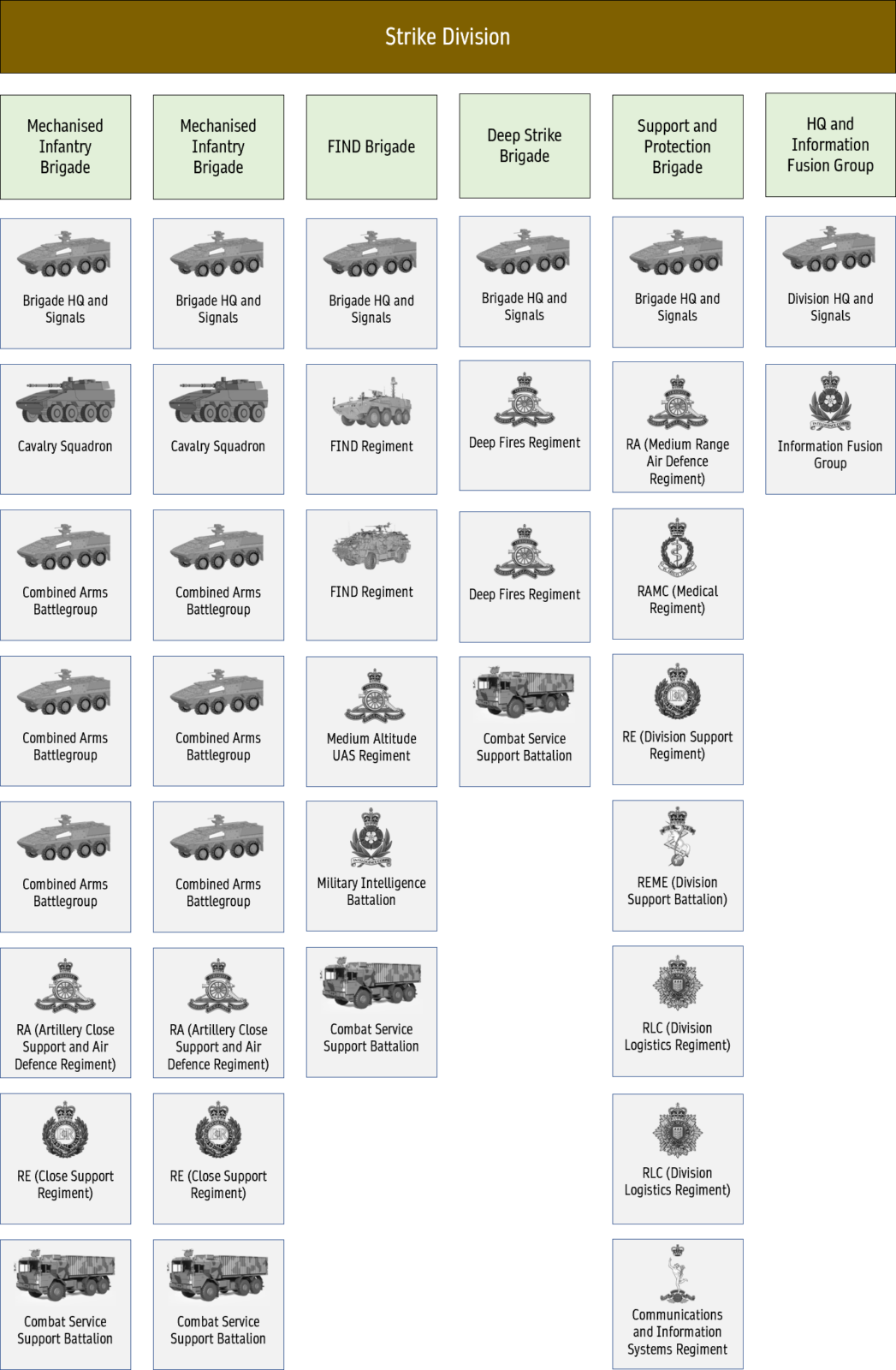
Enabling Command
High-demand low-volume capabilities would be contained with a single organisation, the Enabling Command, not dissimilar to the older Force Troops Command.
Many of these will have a high percentage of Army Reserve and contractors, with the Army gaining only an advantage from their industry experience.
Not covered in any detail below is the Royal Engineers Geographic regiment.
Infrastructure Group
The Infrastructure Group would be a collection of capabilities, primarily Royal Engineers and Royal Logistics Corps, but including some others, that will specialise in the design, engineering and operating of infrastructure supporting the whole force.
HQ and Support
HQ and Support would include the design, contract management, consultancy, and project management specialists from both 63 Works Group RE and 65 Works Group, their engineering expertise would move into the groups below.
HQ and Support Group would also include the Engineer and Logistics Staff Corps (all rank no file), moved from 77 Brigade.
36 Regiment RE would be attached as general engineering capability.
Power, Water, Fuel, and Infrastructure Engineering
66 Works Group and 62 Works Group for water development, bulk petroleum, fuel infrastructure, power, and maintenance.
Exploring options to integrate elements of the RAF Tactical Supply Wing would be part of this proposal.
Maritime
To include 17 Port and Maritime Regiment RLC (paired with Army Reserve) 165 Port and Maritime, and 509 STRE.
The operational hygiene squadrons in 17 P&M and 165 P&M would move to the Power, Water, Fuel, and Infrastructure Engineering group.
Additional investment to support greater utilisation of inland waterways would be made on an opportunity basis.
Air
Combining 39 Regiment RE, 20 Works Group and 71 Regiment RE (Reserve) into a single air infrastructure group.
Exploring options to integrate 5001 Squadron RAF to create a single air infrastructure engineering capability would also be part of this proposal.
Road and Rail
507 STRE (Railway) would be joined by a newly formed RLC reserve team for rail operations and a new STRE for road engineering.
Sustainment Group
Bridging between the Infrastructure and Sustainment Groups would be a dedicated movement coordination team to manage the provision of lift and in-theatre reception.
Simply, a merger of 102 and 104 Sustainment Brigades to create a single, large, logistic support group for both the home base and deployed operations.
Logistics strength has been successively weakened over the last several reviews, we need to understand the deterrence strength of strong logistics. Despite close support being well-resourced, it is in the divisional and theatre support areas that need to be strengthened.
There are no easy ways back and the shopping list is long, but an example of how we can maximise capacity and efficiency is described below.
19 Squadron RLC is the British Army’s only Tank Transport Squadron, but it makes use of an interesting operating concept where the service is delivered through a Public Finance Initiative (PFI) commercial entity called FTX Logistics. FTX drivers and mechanics are Sponsored Reserves, and when not needed on Army business, FTX contracts them out to civilian organisations to keep costs to the Army as low as possible.
This arrangement should be expanded to include two additional transport squadrons, equipped with 6×2 tractor units and a range of trailers, including those ISO containers up to 45ft (ca. 14 m) High Cube Pallet Wide.
Using articulated vehicles and modern trailers maximises efficiency, apart from tankers, the British Army’s largest truck is rigid, capable of carrying only 10 pallets. A 45ft (ca. 14 m) Hi-Cube container can carry 50 if they are double stacked, 25 if not.
These are not a panacea and would be entirely road bound, but it creates capacity for lower-density stores and allows the tactical MAN SV fleet to be better utilised, especially in strengthening the transport capability of the Strike Division that will need every DROPS/EPLS truck and trailer they can get their hands on.
Medical Group
A lift and shift from Future Soldier 2 Medical Brigade except for where I have moved some regular capability into the Strike and Light division, and Armoured Brigade.
With the medical/NHS partnership, this is rather a unique organisational concept.
It might be a better use of resources to distribute this group rather than centralise, creating a Divisional Medical Support Regiment to provide a Role 3 Capability in the Strike Division, allocating resources from there to each of the brigades in Light and JEF-D, one to discuss, perhaps.
Aviation Brigade
1 Aviation Brigade in Future Soldier is 2 Regiments each of Wildcat and Apache helicopters, with a reserve support component and a regular equipment support regiment.
The organising concept is to centralise all Army rotary aviation instead of distributing.
Ukraine has demonstrated the vulnerability of helicopters to increasingly proliferating and capable anti-aircraft weapons, and I would argue that using Wildcat and Apache in the deep battle against a conventional enemy is increasingly unviable.
Many have noted that Ukraine has requested almost every kind of Western weapon except attack helicopters.
Persistent surveillance also places arming and refuelling points at risk, with additional protection the Army needs almost everywhere else.
Interestingly, Japan has come to a similar conclusion and decided to withdraw all its attack helicopters in favour of UAS, loitering munitions and arming utility helicopters.
The cost of 1 Aviation Brigade to the British Army is also significant, but I don’t think we should go as far as Japan as not every battle fought will be against a peer.
Attack Helicopter retains a significant advantage against non-peer and protects the rear against unconventional attacks where its speed and reach provide many advantages, like an airborne CVR(W) Fox of old.
Despite the newness of the AH-64E contract, one of the regiments would be disbanded, and any surplus equipment either be placed into strategic reserve or sold.
The two Wildcat regiments would remain.
EOD and Search
Remains as Future Soldier
Information Exploitation and Electromagnetic Effects
The final component of the Enabling Division is a group that combines elements of 77 Brigade, Royal Signals Cyber and Electronic Warfare regiments.
Risks
There is a significant risk in making these changes, with many role changes and the movement of subunits.
Proposed ORBAT
Due to the complexity and unknowability of how the final organisation would look, I have not produced an exact ORBAT diagram for the Enabling Division, below is a representation with logical groupings where it makes sense.
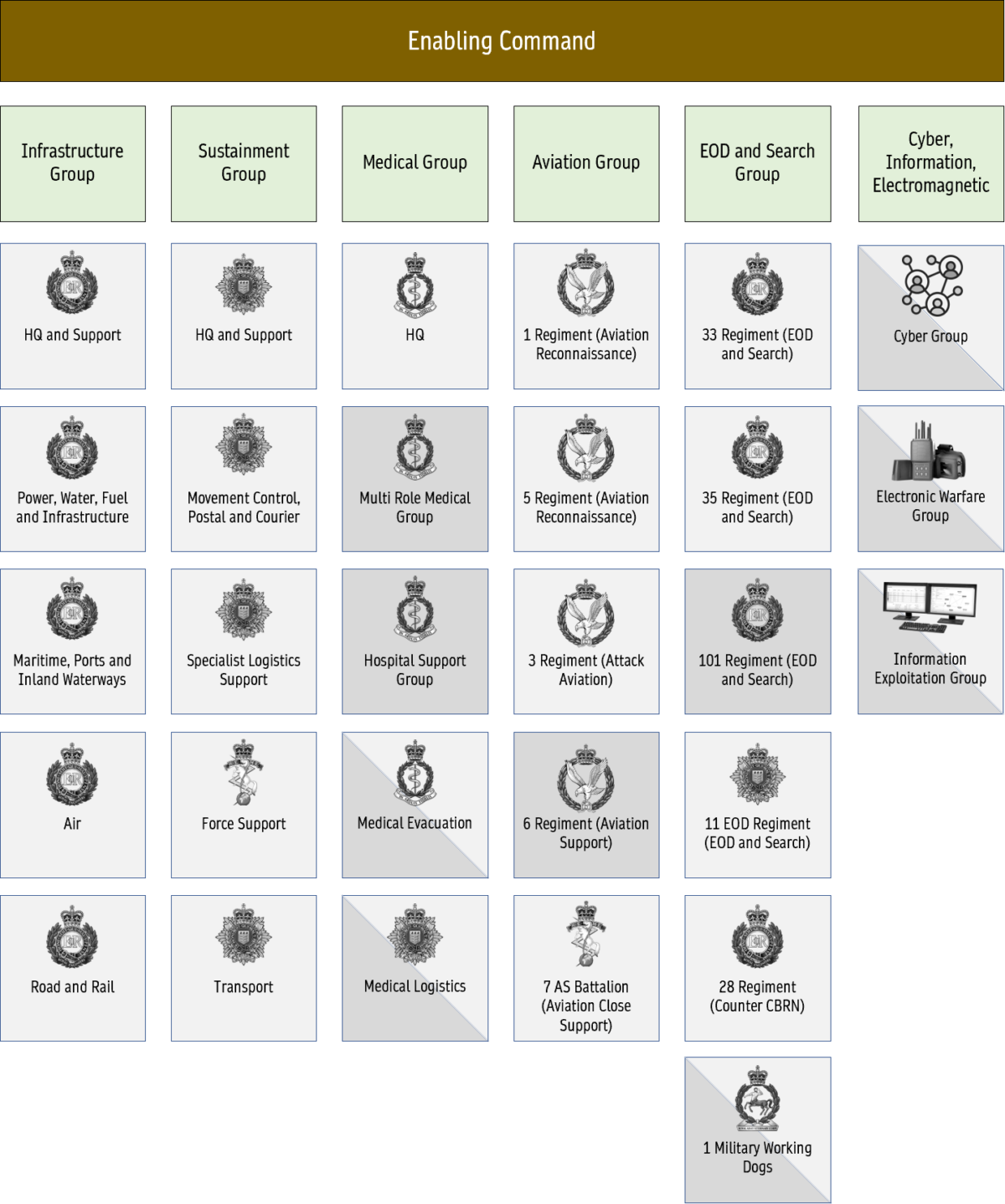
Army Reserve
THE UK IS NOT FINLAND — STOP COMPARING
It is difficult to write anything on the Army Reserve without competing and polarised opinions taking to the ramparts, for or against.
This is because the Army Reserve is a many facetted organisation that defies easy characterisation, opinions of it are often formed by people with little or no direct experience of it.
The Reserve Forces Review 2030 is an excellent document, focussing on skills and flexibility, allowing the Army and the reserve soldier to benefit by reconfiguring them into a Strategic Reserve, Reinforcement Reserve, and Operational Reserve, with mechanisms that facilitate movement between all three.
The report is clearly well-informed and makes some excellent proposals, but I am still not sure that it is achievable in the current resource environment.
The Army Medical Service, Specialist Teams Royal Engineers, and Heavy Equipment Transporter Regiment are all good examples of civilian specialist skills and flexible engagement models working to the Army’s advantage.
As the Army becomes increasingly technical, starting from scratch in the reserve to attain similar skills might become impossible. Maintaining those perishable skills, especially in light of rapid equipment and technology change, is also increasingly difficult.
This kind of ‘civilian skills to army employ’ model is increasingly advantageous for both but the Army needs to keep working on making the package attractive and flexible, investing in equipment and training for them, and making sure their employers continue to see benefits.
These would also offer some potential for civil resilience tasks as they would generally bring a range of applicable skills that responding organisations value and would be able to integrate easily, although response times would remain an impediment for many scenarios.
Ukraine has shown how motivated personnel can be rapidly transformed into an effective force. We do have to be realistic about the risks of requiring such a force. Assuming no change in legislation, this proposal would create a Strategic Reserve Group
The role of the Strategic Reserve Group would be two-fold; first, to provide additional trained personnel at graduated readiness in response to a national requirement, and second, to identify organisations, suppliers, and facilities that can enable the expansion of the Army.
The Strategic Reserve should be less about maintaining a formed group of reserve personnel and more about how to create one from scratch, using facilities held at reduced readiness and a core of instructors drawn from the Regular Reserve.
All regular personnel (with exceptions depending on the nature of discharge) should be offered an opportunity to participate in training options that enable them to retain some of their skills such that they can be used to form the backbone of a quickly recruited main force.
This cannot be forced upon leaving personnel, the package must be attractive.
As can be seen from the above ORBAT diagrams, this proposal moves the majority of the reserve out of the Strike Division and Armoured Brigade.
The Multi Role Brigade (Reserve) is a specifically formed group with a defined role. This allows resources to be applied to a specific set of requirements that are achievable.
For that brigade, more permanent staff would be assigned rather than relying on a few PSIs, the regular Army should invest more in the success of the reserve, and having a single brigade allows this concentration of resources.
Apart from the single Multi-Role Brigade, the small Strategic Reserve and the Reserve elements of the Enabling Division, all reserve units would be disbanded.
Paying for Change
In the opening of this post, I did explain that if the British Army is to stabilise and improve the welfare of its personnel, it must make difficult choices.
There is no realistic expectation of significantly increased funding, wants better housing for service families, where else can the money be found except for Hard Choice Central?
Want a more balanced force, the ratio of combat to CS/CSS has to change.
This means approximately 25 battalions or regiments in the Army Reserve would be removed from the ORBAT and 9 Regular.
I have deliberately not detailed these, this is about broad strokes, but we can either continue to hope for more budget or simply accept it isn’t coming.
This paper provides a good briefing on the cost comparison between regular and reserve, dispelling many myths.
Before reading on, would you mind if I brought this to your attention?
Think Defence is a hobby, a serious hobby, but a hobby nonetheless.
I want to avoid charging for content, but hosting fees, software subscriptions and other services add up, so to help me keep the show on the road, I ask that you support the site in any way you can. It is hugely appreciated.
Advertising
You might see Google adverts depending on where you are on the site, please click one if it interests you. I know they can be annoying, but they are the one thing that returns the most.
Make a Donation
Donations can be made at a third-party site called Ko_fi.

Think Defence Merch
Everything from a Brimstone sticker to a Bailey Bridge duvet cover, pop over to the Think Defence Merchandise Store at Red Bubble.
Some might be marked as ‘mature content’ because it is a firearm!
Affiliate Links
Amazon and the occasional product link might appear in the content, you know the drill, I get a small cut if you go on to make a purchase
Summary
If you have got this far without skipping bits, thank you, it really does mean a lot.
And just to restate the obvious, I sit firmly on the outside looking in, looking in through a keyhole that is firmly controlled by the MoD.
There are so many things I cannot know, and this article is outside my normal fare, so please accept that as a known limitation.
We must stop building fantasy formations with more holes than my lucky pulling pants.
This is a proposal to establish a credible and flexible force design that recognises the need for sustainability and applicability against a wide range of scenarios, both in and out of Europe.
The light brigades are globally deployable and used for a range of intervention scenarios supporting UK interests and those of our allies. Non-combatant evacuation operations in Africa, for example, or a quickly deployed mobile ATGW heavy blocking force in Estonia.
The Armoured Brigade concentrates our heavy forces into a single group that could easily drop into any other division in NATO, but the JEF nations might exploit the potential for expanding cooperation with a standing JEF Division. It could also serve as a foundation for broader capability development, and enhancing diplomatic and industrial relations with like-minded nations.
The Strike Division takes lessons from Ukraine, and mixes them with FRES, Strike and the latest technology, to create a force that can not only quickly deploy to Finland or the Sahel, but have the resilience and capability to be effective.
Recognising that logistics power is deterrence power, the enabling group will be strengthened by trading a large proportion of the Army Reserve and Regular, this is probably the most difficult part, recognising that there is no more money coming, and savings have to be found from within.
The first thing I would say on equipment is that we have to improve husbandry, embed spiral upgrades, and make sure we never again get to the point we did with Warrior and AS90, so much potential was squandered and the fleet run so hard into the ground through neglect there were very few sensible options.
The second thing I would want to see improved is the little things, command posts and tentage, trailers and pallets, tools and night sights, and training and simulation equipment. The kinds of things no one ever talks about, but are the foundation of sustainable capability.
We must be cautious of over-reliance on any one supplier and any one country,
Ukraine has amply demonstrated that politics and being in a queue might not always be conducive to objectives.
There needs to be a sustained increase in funding for logistics, stocks and theatre entry, but you already knew that!
Finally, some items that didn’t make the final cut
- Beards, but only if the Jerkin is reintroduced.
- All doctrine and other publications to go through the Plain English Campaign kite mark scheme
- Combat Boot to establish and maintain a list of forbidden terms, e.g. wave topping
See you in the comments
Discover more from Think Defence
Subscribe to get the latest posts sent to your email.

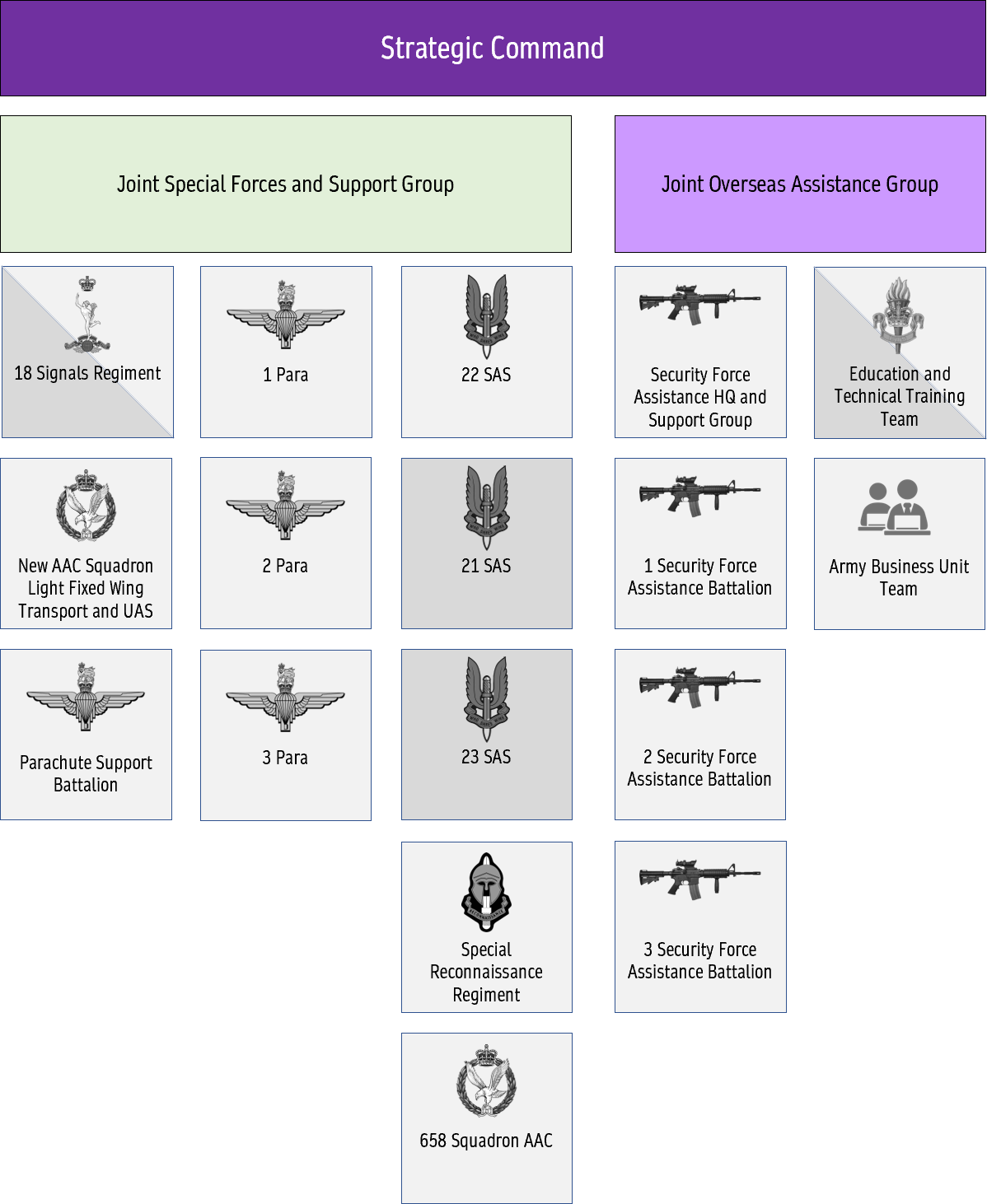

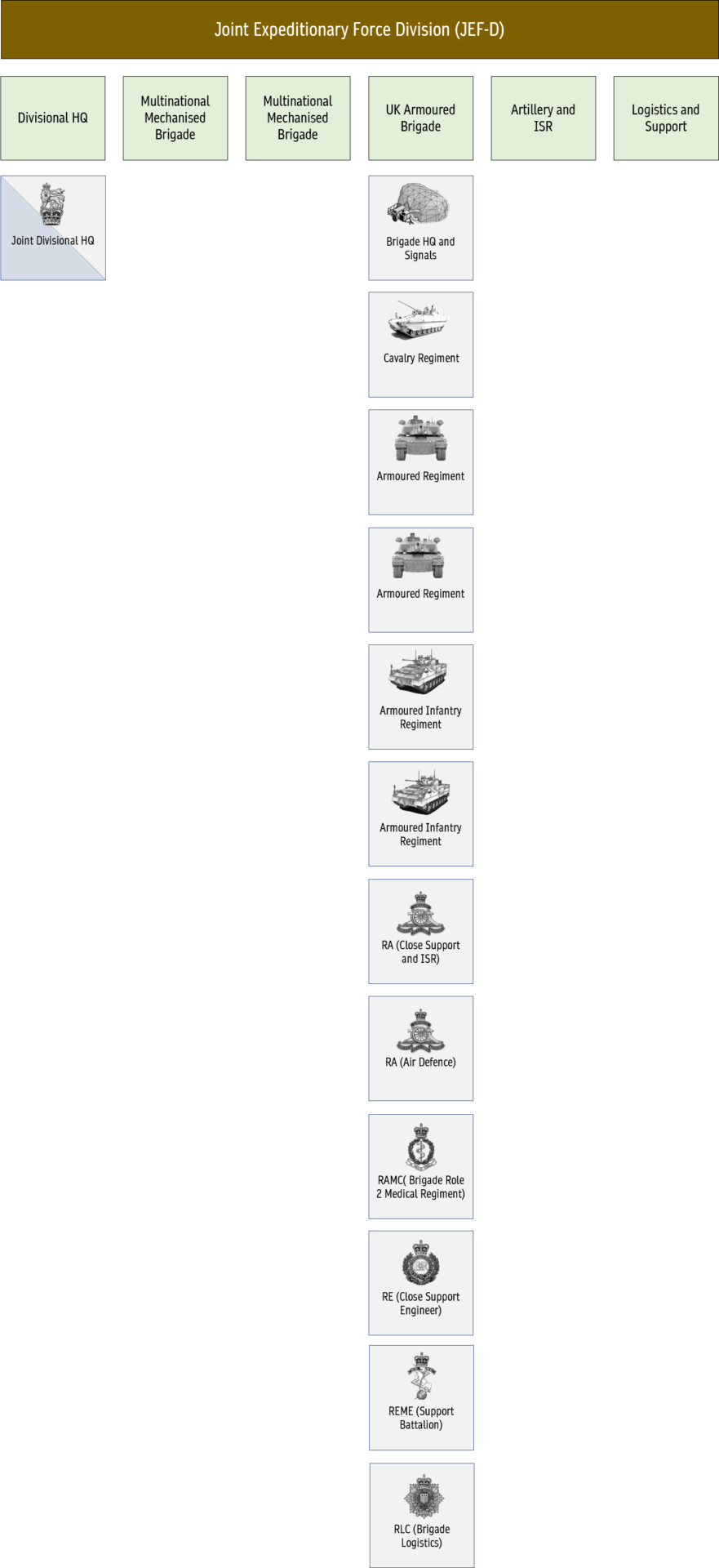


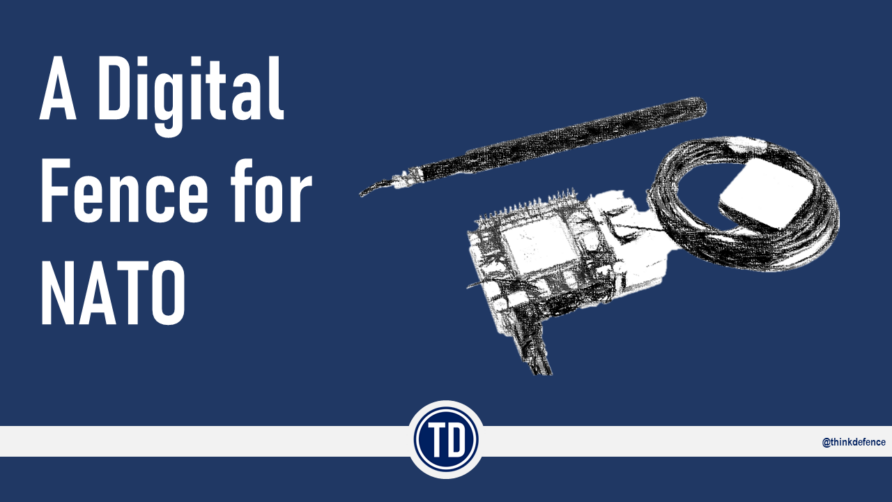

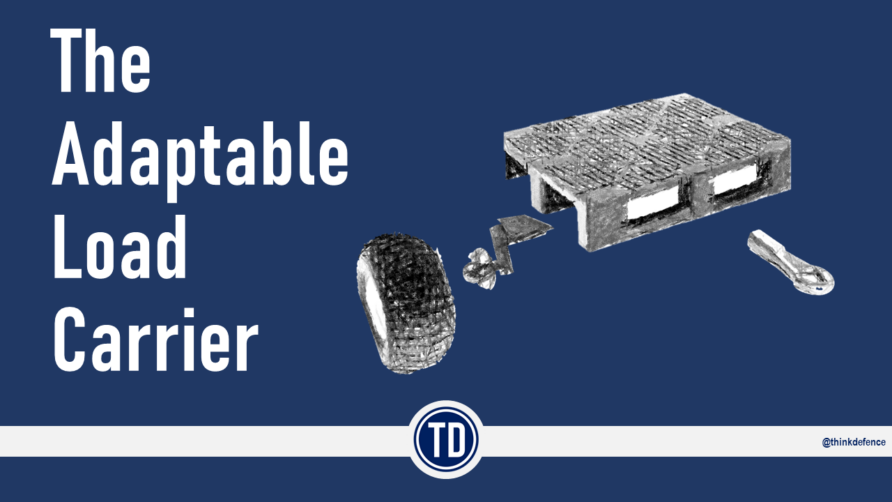
The British Army was Kicked Out of Basra , Iraq and Kicked out of Helmand, Afghanistan. Replaced by US Troops . Since Blair and Brown we have been up the American`s Butts has far as possible.
'A cynic might observe that if there is no plan one cannot be held accountable for it.'
Gems like this keep me coming back for more of the good stuff.
Thought provoking. I just hope it provokes some thoughts were thoughts appear to be sorely lacking.
Hello, been kicked out of Twitter for being underage (I lied about my date-of-birth).
Anyway, just to be clear, are you suggesting we build a single Credible Armoured Brigade who's three battlegroups rotate through UK>Poland>Estonia and this just happens to be attached to 1 DIV?
I assume more comes later but this seems rather a small land force.
Army Change Management Commissioner should absolutely NOT be subordinated to anyone but the CGS following a transformation plan agreed upon at ministerial and governmental level. Putting him or her unde Army auspices will result in him/her becoming the scapegoat for failure, while having insufficient authority to buck the organisational inertia that ArmyCoS and cronies will enforce and the position being used as a threat for career termination / ostracism.
Thank you, TD, for all the effort you put into this, your blog and twitter.
I have spent an inordinate amount of time as an armchair general trying to 'fix' the issues facing the British Army. The one thing I have argued for, this past decade, has been 'urgency' – it is just a pity that it takes an illegal invasion of a friendly nation to acquire some [echoes of 1982, when I was taking my 'O' levels]. I have been to Kherson [as well as Kyiv & Odessa] and pray the people I meet are safe and well. Allowing Putin to stroll into the Crimea without a more robust response from the 'West' signalled appeasement to me much like the 'Sudetenland' crisis of the 1930s… Anyway…
To me the attitude of the army senior 'managers' was summed up recently at a session of the HCDC, when the officer opened a reply to a question with the phrase 'wave topping on the macro level' FFS!!! Thankfully, in a more recent session the general involved [a Royal Marine, I might add] seemed to be far more plain speaking and clear about what the army needed to do right now.
Yes, urgency… I do hope they understand that technology is evolving at such a pace that ordering equipment now, for deliveries in 2030 and beyond, is frigging pointless… they might as well order betamax videos …
An Army has to be like a good tool box for your DIY. You don't know what the next job will involve but you have to have the basic tools for the most common tasks. Once acquired, if you have any sense, you maintain your tools. You don't buy a phillips screwdriver and then dispense with it after use [a la withdrawing the C-130 Hercs, which is madness and simply a financial spreadsheet decision ] … As time goes by you might purchase more specialist tools for a particular task, but again if you have sunk they money into a purchase, you hold onto these for when that same task comes around next [Foxhounds, Mastiffs] which it certainly will… Yes, there is a budget for your tool box, and there are tools we cant afford, but planning to buy a copping saw in 2030, for a job that requires one now, is foolhardy.
Alors … melted cheese on everything please…
This is a more accurate list of senior staff in Army HQ.
https://britisharmedforcesreview.files.wordpress.com/2023/03/army-command-senior-personnel.pdf
Might be an easy reposte, but there has always been a "Official Secrets" contravention defence when questions are deemed too difficult to answer, such as Future plan, structure of Force, budgetary oversight etc. Mind set has to be forcibly changed. Does the Army need Brown brogues, plum trousers, yellow cravats and silver guigons on the shoulder for a single Regiment when the next Regiment has all the same kit but wears it's hat to eat and doesn't stand for the loyal toast? Our differences are yet another drain on resources.
The truth is it's being merged into the EU Defence Union and has been rundown for decades , there are no votes in defence. Plus the dreadful mismanagement of the army.
The ongoing COVID pandemic has clearly shown that the UK Government is committed to avoiding high numbers of civilian deaths, (casualties).
Therefore, should the Government find itself threatened by either a full-scale, conventional war, or a nuclear conflict, it would have to back away – to avoid high numbers of civilian casualties.
Under such conditions, most of our most expensive military assets would be useless.
All that the UK requires is a border defence force, and the ability to combat terrorist threats, ie. no aircraft carriers, no nuclear weapons, a much smaller armoured force, etc.
The implications for the British Army are enormous.
Getting rid of kit that might be useful again is, I suspect, driven by 'Resource Accounting', introduced in 1990s, which charges notional interest on the value of assets (equipment, stores and buildings). Another civilian practice, like 'just in time', which is of at best questionable relevance to the military which needs 'just in case', especially where production lines are likely to close after meeting small UK initial purchases with little if any overseas sales. For GRANBY, for example, production lead times for many items was 12 months or more – hence large scale cannibalisation of the rest of the CR1 fleet was the only solution (which, would you believe, some not in uniform thought was a reasonable future planning assumption).
I seem to recall that a few decades ago the strategic nuclear deterrent was funded separately from the main Defence budget, but was then brought in (to meet the 2% GDP target?). Without that element, conventional defence is underfunded compared with other non-nuclear countries – especially those without two huge, white elephant, “good target”, pork-barrel, willy-waving carriers with insufficient fleet protection, aircraft or aircrew for both ('One on, one in the wash'?). The recent proudly announced £5bn is mostly smoke and mirrors, taken up by restocking stuff gifted to Ukraine (for which PMs take the credit) and inflation. Let’s hope the Army gets a good slice of the next £6bn.
Yes, I have become a touch bitter and cynical in my old age…
'I suspect no one is more acutely aware of the problems that the British Army has than the British Army itself, it would be both arrogant and foolish to think otherwise.'
In there, I think, lies part of the problem.
42 yrs ago I was inculcated to believe I was the best, my kit was the best etc. etc. etc. Chieftain in a defensive position against a T55 was a good bit of kit, and I could load pretty quick, but to think I was the best was pretty arrogant..
But now, with my son in the army, and listening to the utter rubbish that he has been told about how fantastic the British army is, the same rubbish that I was told but on steroids, I can only think that arrogance is a big part of the Army's problem….
My biggest gripe about the Army is its inability to listen. My regiment were the Demonstration battalion in Warminster in 1984 and subsequently were carrying out trials on the SA80. It had a number of faults, intermittently throwing empty cases back in the face when firing, magazine falling off when using the sling system, cocking handle failing off and not feeding the round properly, SUSAT steaming up in inclement weather. It was very accurate, however was not a battle winner in our eyes. Unfortunately the report which was read on the performance was the one the Pl Come wrote, and who had been on corporate entertainment for the day, not the troops on the ground. The weapon then came in to service and we were convinced it happened just to keep Enfield in business. I am now seeing billions wasted on Ajax, which sounds wholly inappropriate for purpose. Once again we are in a position where politicians are deciding what the military gets, rather than the military themselves. There are far better weapon systems and vehicles which could be brought off the shelf, and which are battle tested. The other issue is soldiers pay and pensions, and the goalposts on this continue to move. As far as I am aware a soldier will serve until he is 55 but see no renumeration until he is 60. Where is the incentive to stay in, and therefore experience be retained, which by the way is incredibly important in this day and age. Until the military has the correct equipment, facilities, pay and preferably the ACC back in the cookhouse, none of what has been written can be achieved.
If the common soldier who does all the work is not properly resourced, then the remainder will never be in place.
Really quick one, in 'continuous learning', I think there is a hanging reference to 'Education and Training Service'
One question: with that number of Para Bns in JSFSG, would that also (effectively? formally?) hold the role of what we might think of as Spearhead Bn?
Hi J, the very high readiness stuff will be in the next part of the series, what replaces 16AAB etc, and thanks for the heads up on ETS, will have a look
So the Parachute Regiment becomes the 75th Ranger Regiment? Makes a lot of sense. Also means we get rid of the faux rangers.
For overseas capability development, we cannot afford BOTH the Army Special Operations Brigade and Security Force Assistance Brigade as constituted.
But then it is proposed special operations are increased using 2 battalions of the parachute regiment. They have a strength similar to the 4 smaller battalions of one of those brigades that we cannot afford. A new Battalion Support Group would be established increasing the strength. A single overseas assistance brigade is formed which, with supports, again looks to use more personnel than either of those brigades that we cannot afford. All those personnel are transferred to Strategic Command and that helps what the army can afford if no budget is transferred. I can’t see that happening
The way I see it, 4 rangers and 4 SFAB are compressed to 3 plus a support battalion, numbers for each are relatively low but it would still maintain the capability just at a smaller scale. The SFSG and 16AAB are separate subjects, will cover the latter in Part B :)
16 AAB is a monstrosity: suffering from "chuck all airborne things in one brigade". That being said, parachute theatre entry is a capability that is relatively cheap and still useful. Putting it into SFSG will ensure the capability is lost while overstaffing the latter, because SFSG is all about small unit operations. Better to make 16 AAB into 16 Parachute, with 2, 3 and 4 Para included while 1 Para stays as SFSG. 16 Para doesn't need integral helicopters, or anything other than some CVR(T) and light vehicles and quad bikes
Lots to think about and i think a pretty good balance achieved.
My one comment would be with the special forces group in the from the last article.
And 5 regular brigades plus some significant support brigades. Can that all really be achieved within the current head count and resource?
It is surprising when you put the numbers in a spreadsheet, also, am trying to make it balanced, imbalance a sin we have continually committed in the past
Excellent article as ever. I don’t like the idea of Ajax being employed anywhere other than in an Armoured Bde alongside Challengers, nor do I like the idea of the “Find Brigade” although I wholeheartedly agree that Reconnaissance (ISTAR in general) is a “capability” not a unit or a unit role per se, but as you note at the beginning you are not aiming for massive radical change, and so embedding the capabilities at lower level across all formations might require too much radical change. Make JEF a Corps and make the UK’s HQ ARRC into HQ Allied Northern Corps, let the US have the responsibility for “rapid reaction” as they are the only nation within the alliance that has the transport and logistics to enable rapid reaction at Corps level.
This stupid Sunak/Hunt Government needs holding to account We as a Country cannot afford to rundown our Military Capability in an increasingly Dangerous world with Psychos like Putin Xi Jinping and Kim Jong UN in the world
Interesting article, and one which will have all the Colonels Blimp huffing and puffing into their moustaches!!
One aspect I would like to see is a discussion on forward positioning of equipment, not that the British Army has much to position! The Americans are once again talking about expanding these positions – but is it realistic? With GPS-guided missiles (hypersonic or not) available, presumably these lovely fat targets would be some of the first taken out, unless they were defended?
I thought the lesson of Russia's invasion of Ukraine, and China's vast break-neck military build-up, is that we, and rhe West generally, might be required to fight a protrqcted, intense war in all five domains (land, sea, air, space & cyber)? I don't mean to be critical, as it's easier to criticise other's ideas than come up with ideas of one's own, but your plans call for a scaling down and reallocation of Reserve forces, when surely we need small Regular forces and much larger military Reserves?
I have read all 4 parts of The Future of the British Army and found it very interesting. I would however be grateful if the Author could identify him/ herself and give an indication of their background. It helps me understand where you are coming from.
Martin
An remote autonomous HiMAR is in development and testing since 2021, called the AML Surrogate Launcher using a cut down Oshkosh M142 6×6 chassis…
As always, TD, it’s an excellent article – but I’m distracted by the one that got away. The suggestion "all doctrine and other publications to go through the Plain English Campaign kite mark scheme" [sic]. You might be surprised to find that I disagree. However, it’s a discord of degrees.
I’ve used the Plain English Campaign scheme's teaching materials in anger, as it were. While they’re clinically on point for revelation, refresh, and instant fixes in a workshop environment, they fall far wide of the mark for effecting in-depth transformation, organisation-wide.
Yes, change can be realised through the conduit of a pragmatic communications team that’s willing to take a stand, but the momentum for tangible improvement in the quality of written materials – materiel, even – must come from the top. Visibly, from the top.
Most importantly, it’s an understanding of the **value** of better written communications that’s missing. Success requires cultural change at that very basic level. Otherwise, what you have is a backbone of ‘better’ documents in a bottom drawer but neither the insight nor appetite to ensure a valuable skill-set is appreciated and then put to good use, organisation-wide.
That shift in mindset is much harder to achieve. Partly, because a great deal of documentation is created by committee: protagonists use specific skill-sets to help create a piece of collateral but, because ‘great writing’ isn’t necessarily one of those skill-sets, they then dilute the quality of their content. What's more, the quality of that content is usually judged (signed off) by people who, again, aren’t necessarily good writers. It's not 'garbage in, garbage out' – but it may lead to 'over-written, inconsistent tranches of text … dwelling on single words, not seeing the bigger picture'.
In the main, cultural change is challenging because we’re talking about a lack of awareness regarding the problem – that’s endemic, it’s not confined to the British Army – but also because there’s a belief Plain English Campaign workshops or ‘putting publications through the scheme’ might address the problem. I could go on. Maybe we should write about it.
Anyhoo – cheese flops for the win, TD.
Great articles and very thought provoking, thoroughly enjoyed reading these thanks for taking the time to write them
if we’re going for realism, is converting Ajax into an IFV or buying a whole fleet of CV90 realistic?
With CV90 commonality, there are six users but also six quite different variants with three different main armaments.
The cheaper, simpler vehicle was the role Boxer was procured to fill?
Not HIMARS seems sensible, but no MLRS? Will land precision strike be ready by then?
Merryn, whilst I agree with you in part, I think the first think that should happen to most of these documents, is that they should be reviewed in "Word" using the "Read Aloud" function. Whilst it won't cure all the ills, and it is a bit stilted with certain words, abbreviations and phrases, it certainly highlights errors, where the spelling is OK, but the wrong word is used. Because the people who both write and review the document know what they are trying to say, they end up with "word-blindness" and don't see an issue. To paraphrase Eric Morecambe, "its all the correct words, but perhaps not in the right order".
Why didn't the mod build a couple of prototypes of ajax and iron out any problems at Bovington before rolling hundreds off the production line and costing needless millions,challenger 1 was first a prototype the problems ironed out snd then went into production. Is it because like many of our industries tank production is defunct here? And we have to rely on foreign company's to build our tracked vehicles??If that's the case why don't we "buy off the shelf" from the USA.It would possibly work out a lot cheaper even with a spares package!
Mark – I don't disagree, hearing content will reveal many ways it might be improved. Better still, reading it aloud is an even more effective tool for writers who want to understand how readers will interpret their text.
The 'How Defence Works' charts are outdated. Use my org
https://britisharmedforcesreview.wordpress.com/list-of-senior-british-serving-personnel/
What is said is right, but can the military accept so much change at once…so change will be incremental and frustratingly slow as usual, sorry that's my view!
Loved the bit early on in the piece about expenses. Being old and a user of rail, I have a Senior Railcard that allows me a discount on fares, that I also utilise when travelling on business to London, and hence reducing travel costs to the MOD, where I work on contract. Later this month, I am back up to London with 2 x CS colleagues, and I enquired if they had railcards. No was the answer. I suggested that if one applied for. 2 for 1 card and got the cost refunded it would actually end up saving MOD approximately £30 even after the Railcard refund. The answer came back, NO. The reason apparently is that it would be seen as a “gift in kind”, to the named card holder, so can’t be done. What an absurd system. I know it was only £30, but one wonders how much could be saved overall by funding travel cards, if and when it can be clearly shown that there is a financial benefit to the Organisation.
I've been mulling your post over for some time now and I think you are right about changing the organization to study change. But there are some things I'm gonna disagree on
First is equipment. Ajax should be binned and while cv90 is an attractive alternative it would take up additional limited financial resources. Instead more boxers and have them up gunned simply because that is what they army has ordered. Your light fixed wing aircraft is a good idea too but with budgets being tight an additional airframe would be difficult to support financially. Unless there is a BIG pile of money given to the armed forces then its not needed.
Your ORBAT has too many 2** HQs with 2.5 if you count the JEF division plus ARRC. Reductions can be made here too. 1 Div HQ and the JEF Div would be enough. JEF would have 2 armoured brigades plus support and be Europe focused, while the single UK Div, or corps, would look at the rest of the world. Your army of 73K also has only 16 combined arms battlegroups if I count it right when it should be at least 18 in 6 maneuver brigades. I would keep an additional armoured brigade even if they had only 3 maneuver battalions and a brigade recce squadron Instead of a regiment. For the boxer brigade I would unite the cavalry squadrons into 1 cav regiment to act as a recce and light tank regiment with boxers. If necessary delete another infantry battalion, if not, give additional resources to make a 4th battlegroup. Basically they would look like a CW mech brigade but on wheels. But I like your Find brigade and your infantry brigades make sense. Just substitute the "light strike" for what they are which is light cav.
Basically delete a few more units so that the remaining units are proper combined arms battlegroups with engineers, arty, logistics, and direct fire support. Cut out additional new vehicle purchases to simplify support and to ease the financial burden on the equipment budget.
"Ukraine has shown how motivated personnel can be rapidly transformed into an effective force."
A fantastic piece of work holed beneath the waterline by one stupid statement.
Go back to you container fetish TD.
TD,
Fantastic piece as always have been meaning to comment.
With the Royal Marines off to do as William Slim would say “Royal Corps of Tree Climbers” does the British Army need to take on the heavy lifting of amphibiosity (not Private Ryan style but unopposed landings)?
To me it seems that Light Brigade 2 seems poised to do this as a manoeuvre formation with an expanded mission set from 17 Port and Maritime Reg. Could even see the Viking with the Light Brigade 2 – the booties surely don’t need this as they will be jumping out of Merlin’s with daggers between their teeth.
A
Following from my last post and to continue the jibber jabber, 2 Light Brigade maybe best positioned for Vikings. They can go anywhere and offer decent protection for light forces.
A
Fantastic piece but rather poignant in that it describes the British Army as it might be but won't. Our governments, and electorate, are complacent, soft and utterly risk averse as pointed out above by another reader. Logically then, all we need are Armed Forces that can defend those remnants of Empire we want to keep and the UK. And quite frankly it is an increasing struggle to get many people in the country to do even that. A well-trained deployable force of a brigade or two backed up by a large militia should do. The RN will be a coastal force and the RAF some fighters and transports/tankers.
This is what most of the parties seem to be offering anyway. There are no votes in Defence.
The prospect is appalling….